Tom's Hardware Verdict
The new be quiet! Dark Power Pro 12 with 1500W max power achieves high performance, but it cannot beat its main opponent, the mighty Corsair AX1600i.
Pros
- +
Full power at 46 degrees Celsius
- +
Good build quality
- +
High overall performance
- +
Good transient response
- +
Efficient
- +
Long enough hold-up time
- +
Low inrush current
- +
Silent operation
- +
Low vampire power
- +
Lots of connectors
- +
Fully modular
- +
Ten-year warranty
Cons
- -
Expensive
- -
Not as efficient as competitors
- -
EMI suppression could be better
Why you can trust Tom's Hardware
be quiet! has a strong offering in the super high-end PSU category, the Dark Power Pro 12 with 1500W max power. It achieves high overall performance, and it remains quiet, even under severe operating conditions. It isn't as efficient, though, as the Corsair AX1600i, something expected since it doesn't use at totem-pole PFC converter. Moreover, its overall performance is notably lower than Corsair's top offering. The Dark Power 12 1500 might take the performance lead from the EVGA SuperNOVA 1600 T2, which has proven its bullet-proof design, though, though the mining era, but it doesn't pose a severe threat to the Corsair AX1600i, so it cannot be included in our best power supplies list in the high-Wattage category.
The new flagship line from be quiet! is named Dark Power Pro 12 and lists two members, with 1200W and 1500W max power. Both are made by CWT and use a new platform that features digital control for most of its circuits. According to be quiet! these units can achieve up to 94.9% efficiency, which sounds impressive. They don't state the input voltage, though, but we can safely assume that it is 230V, because such high-efficiency levels with 115V are super hard to achieve.
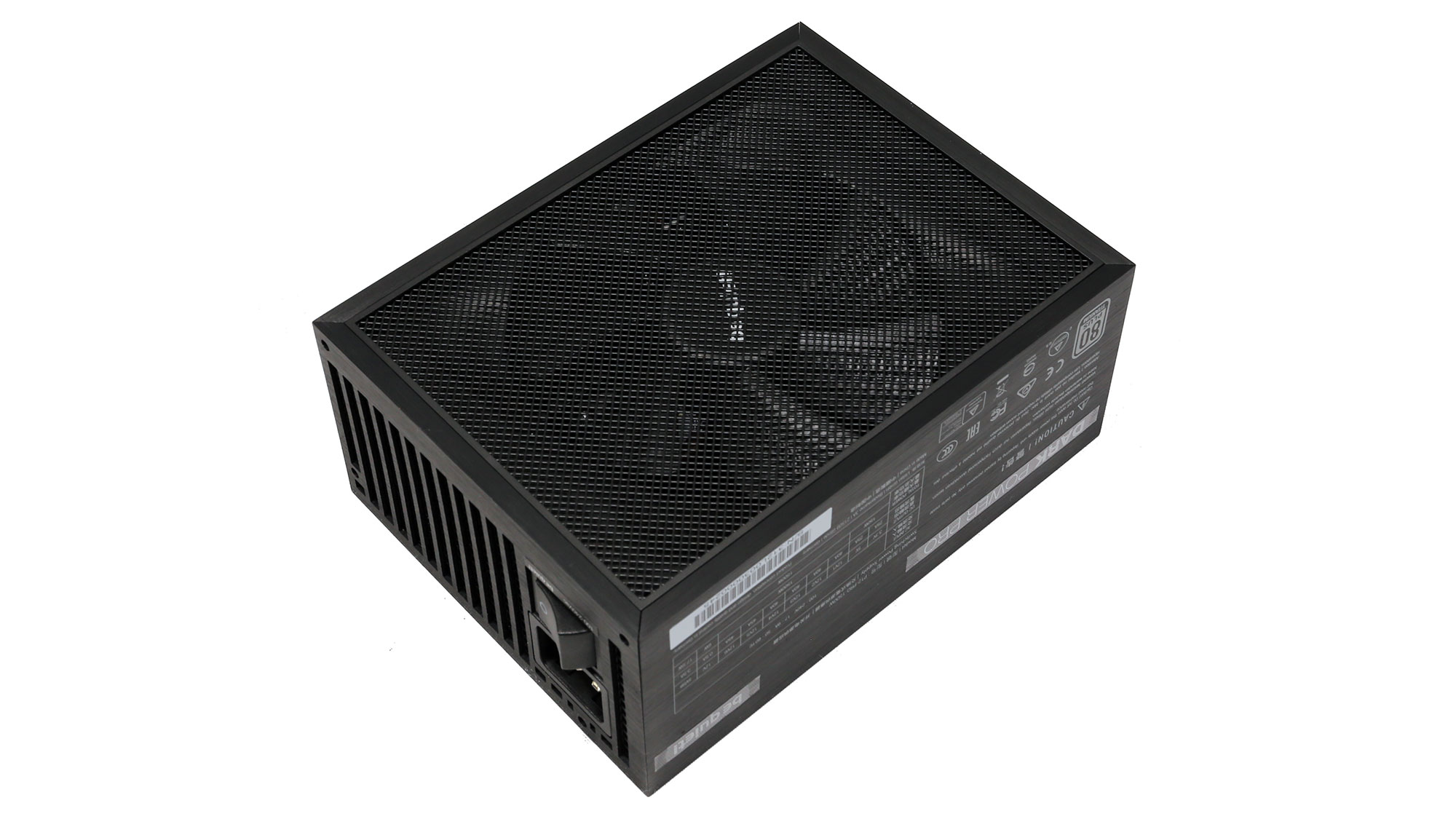
Product Photos

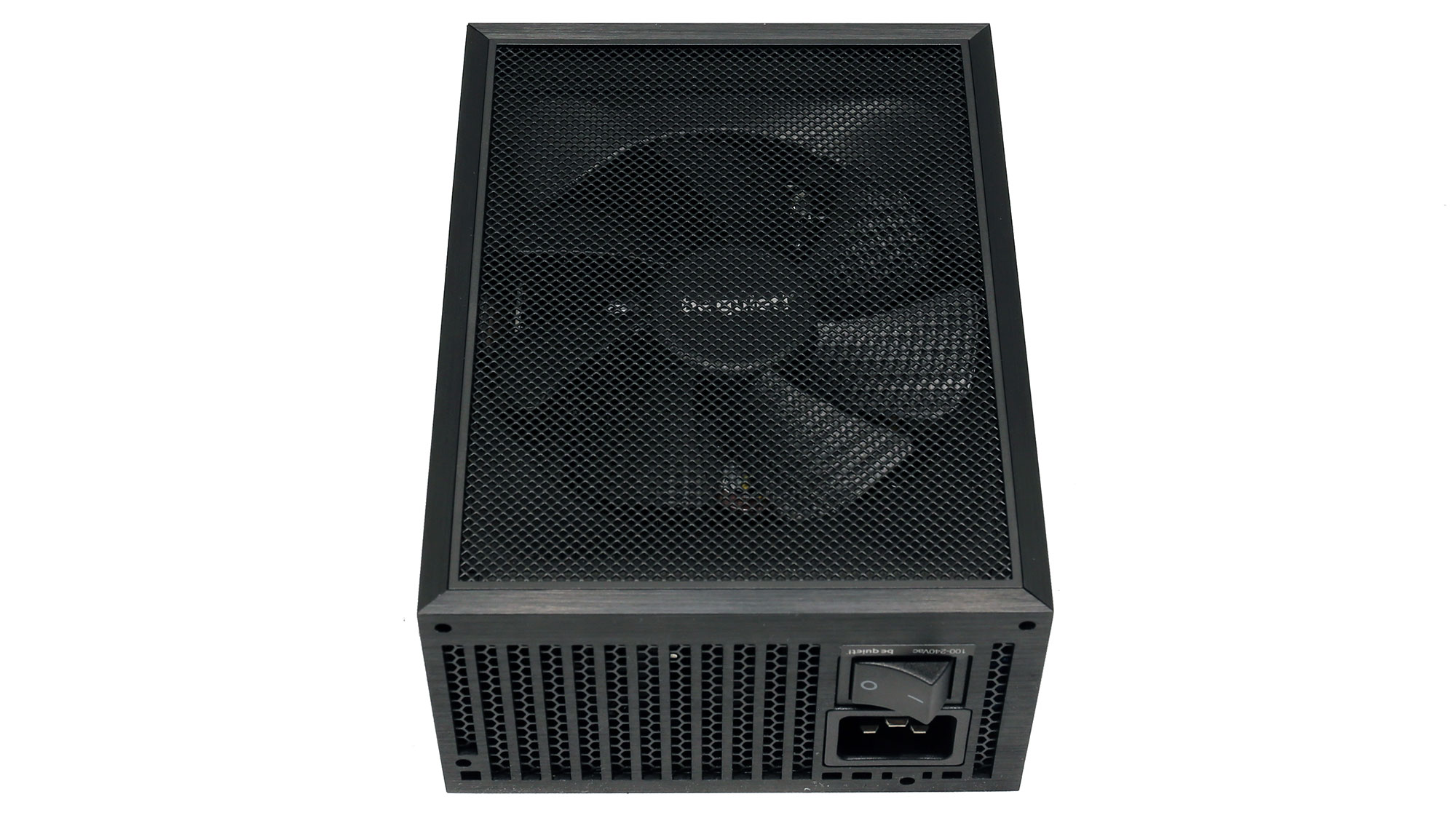
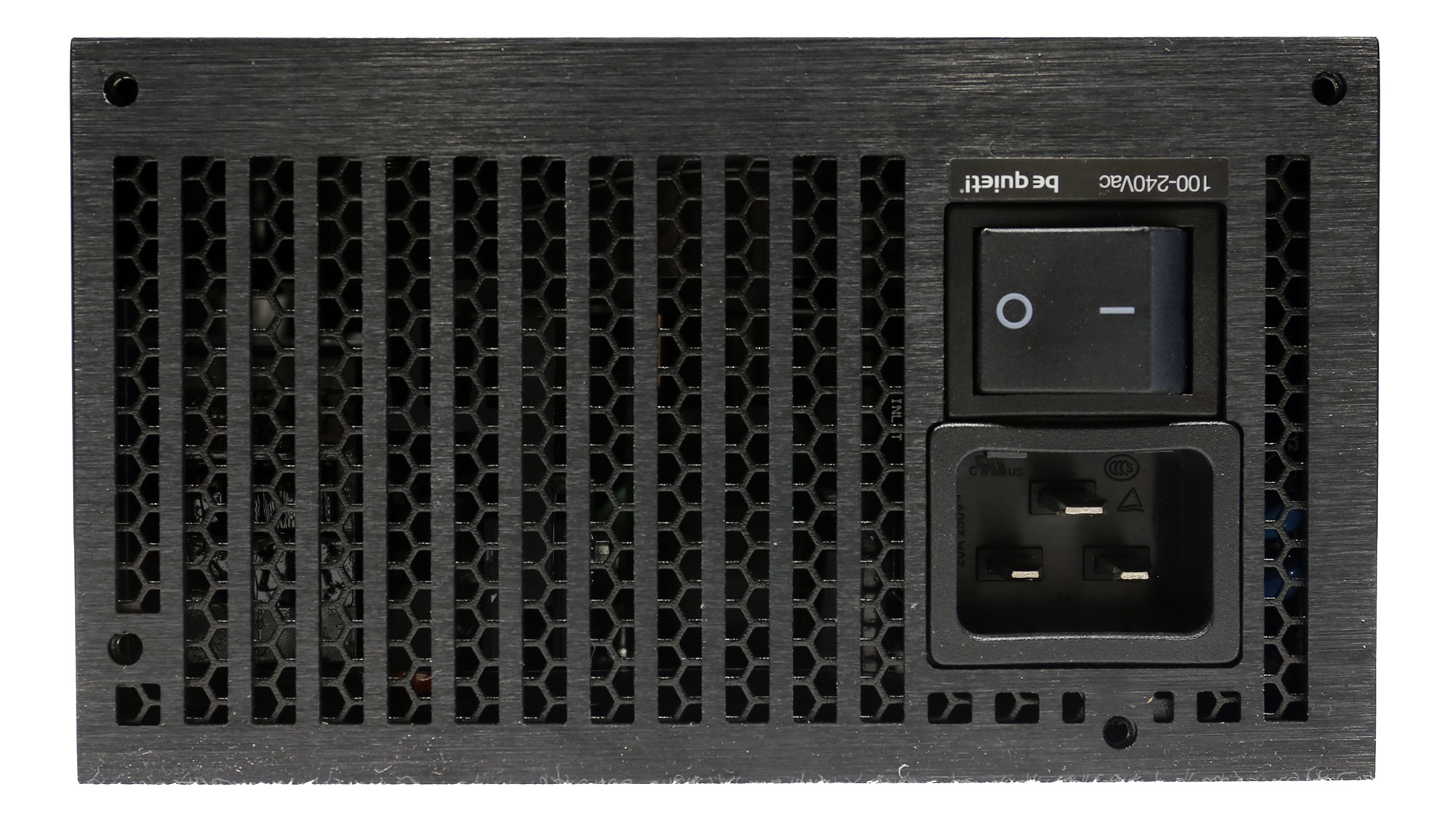
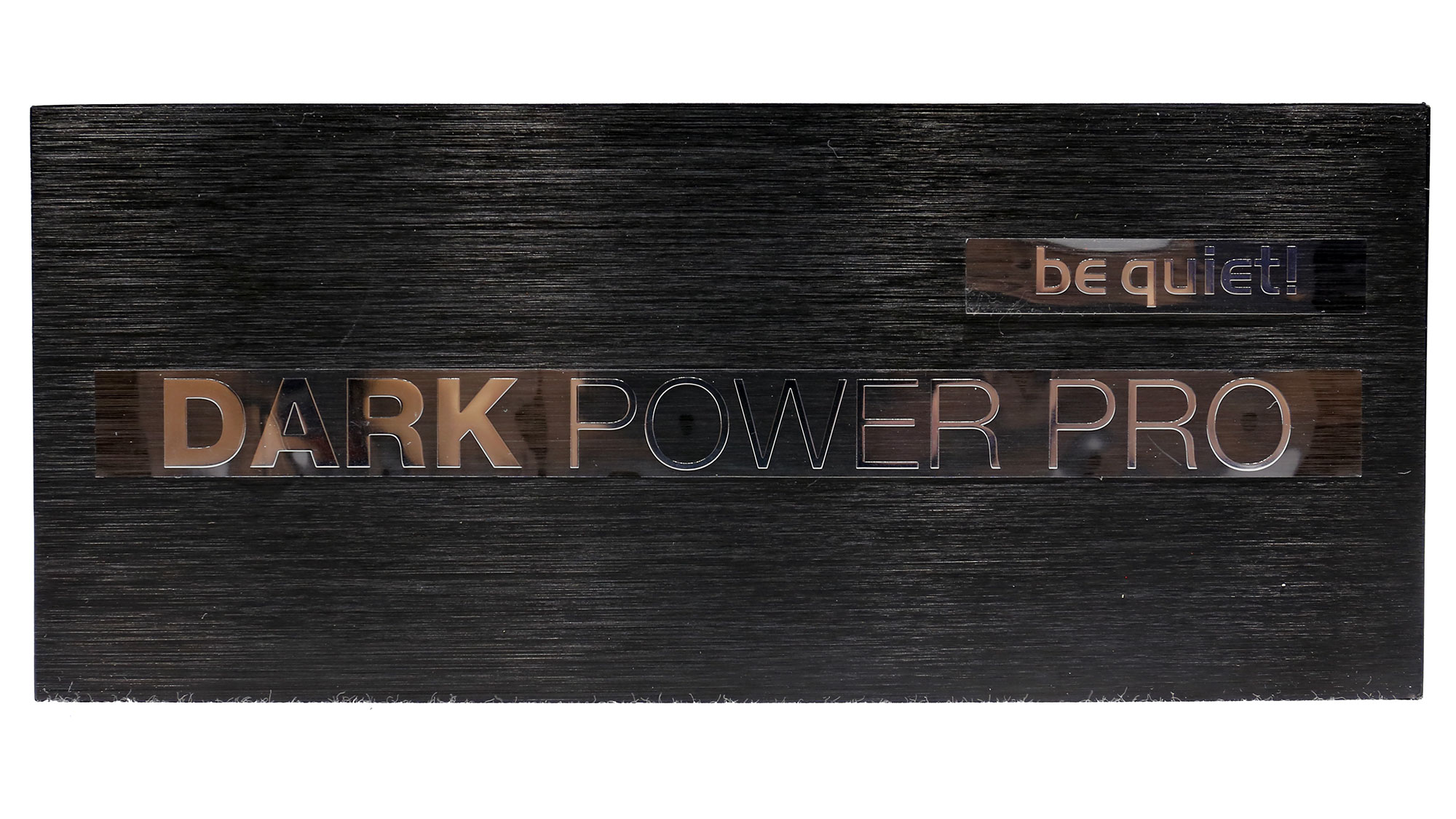
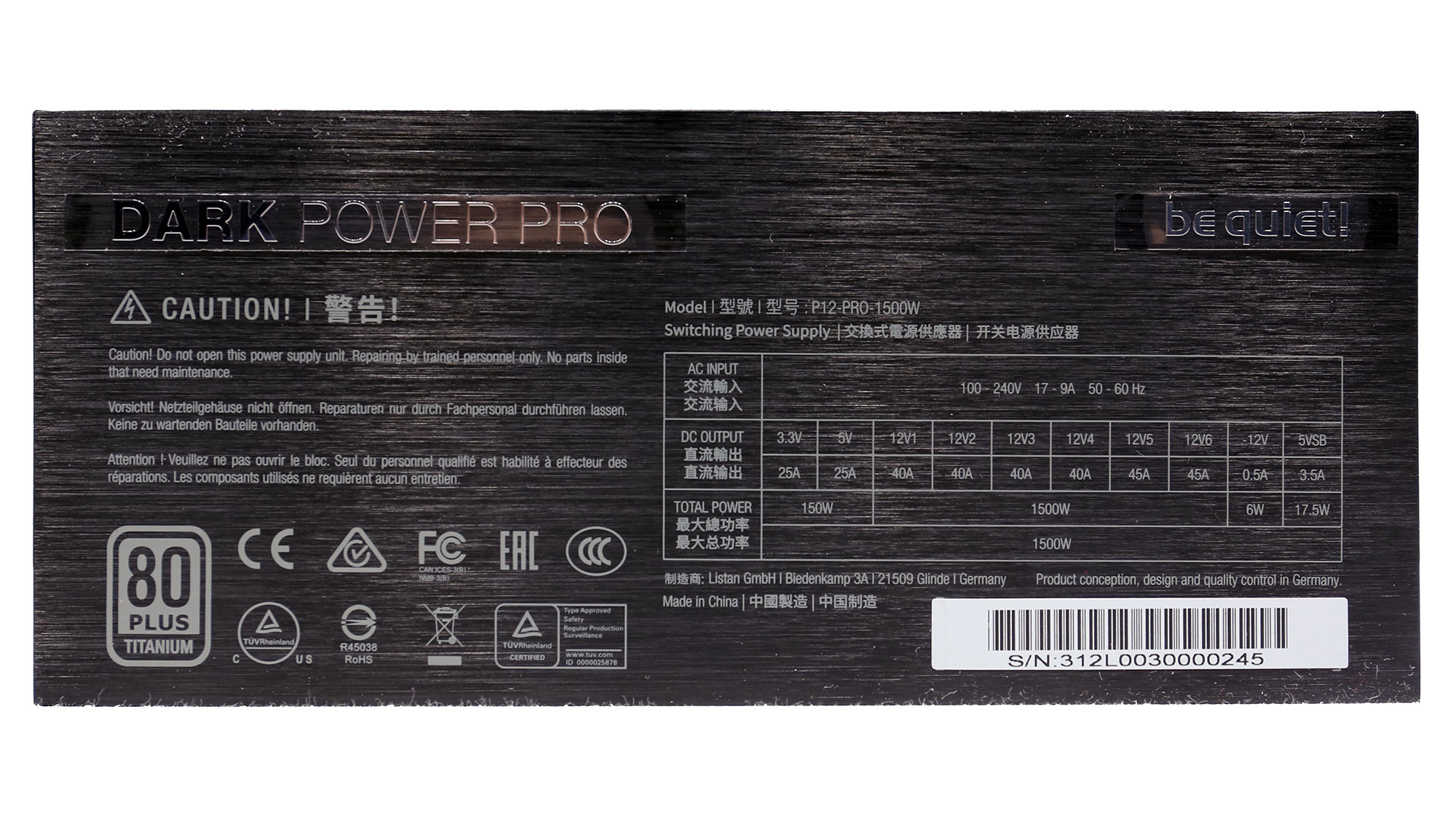
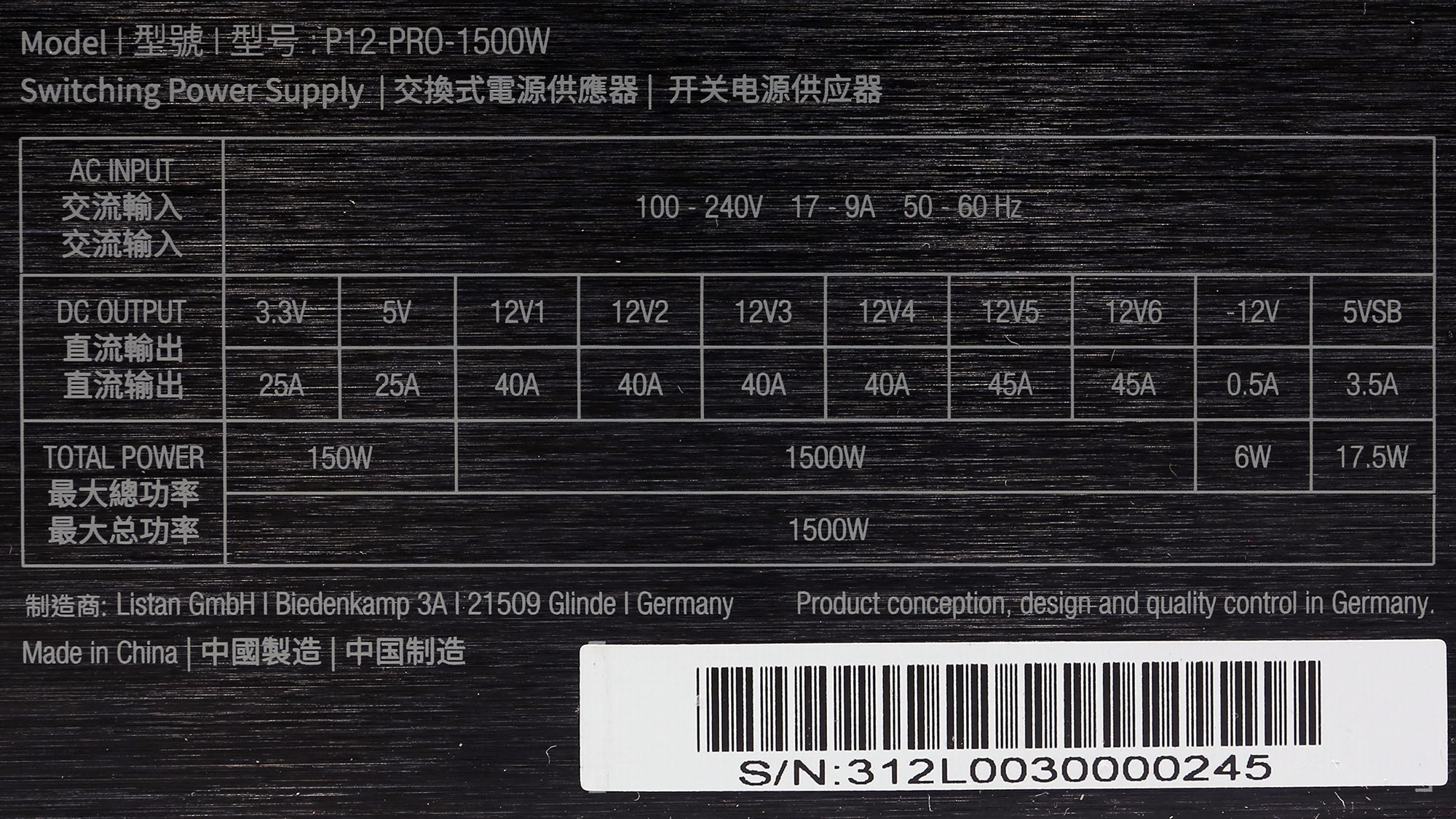
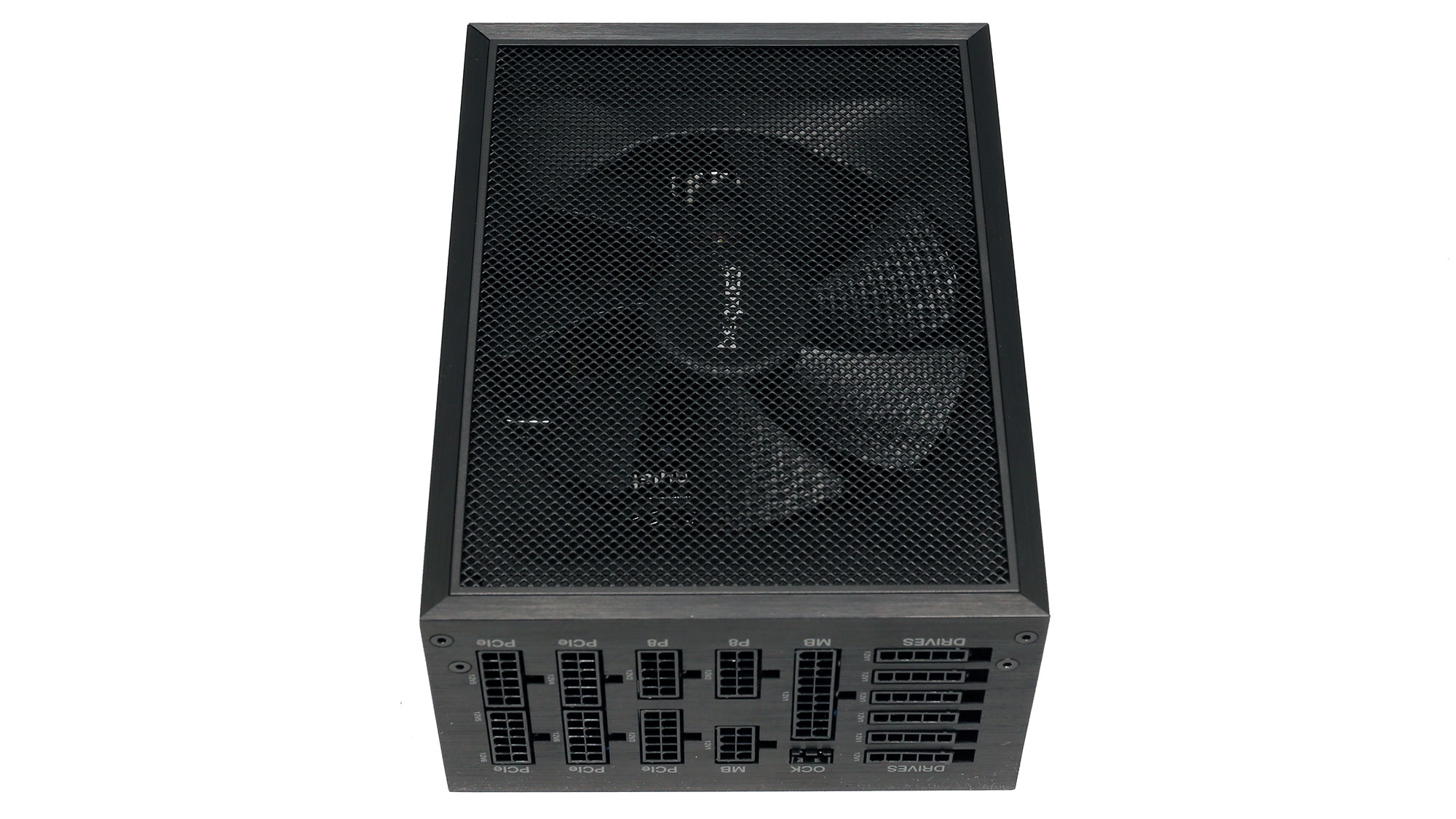


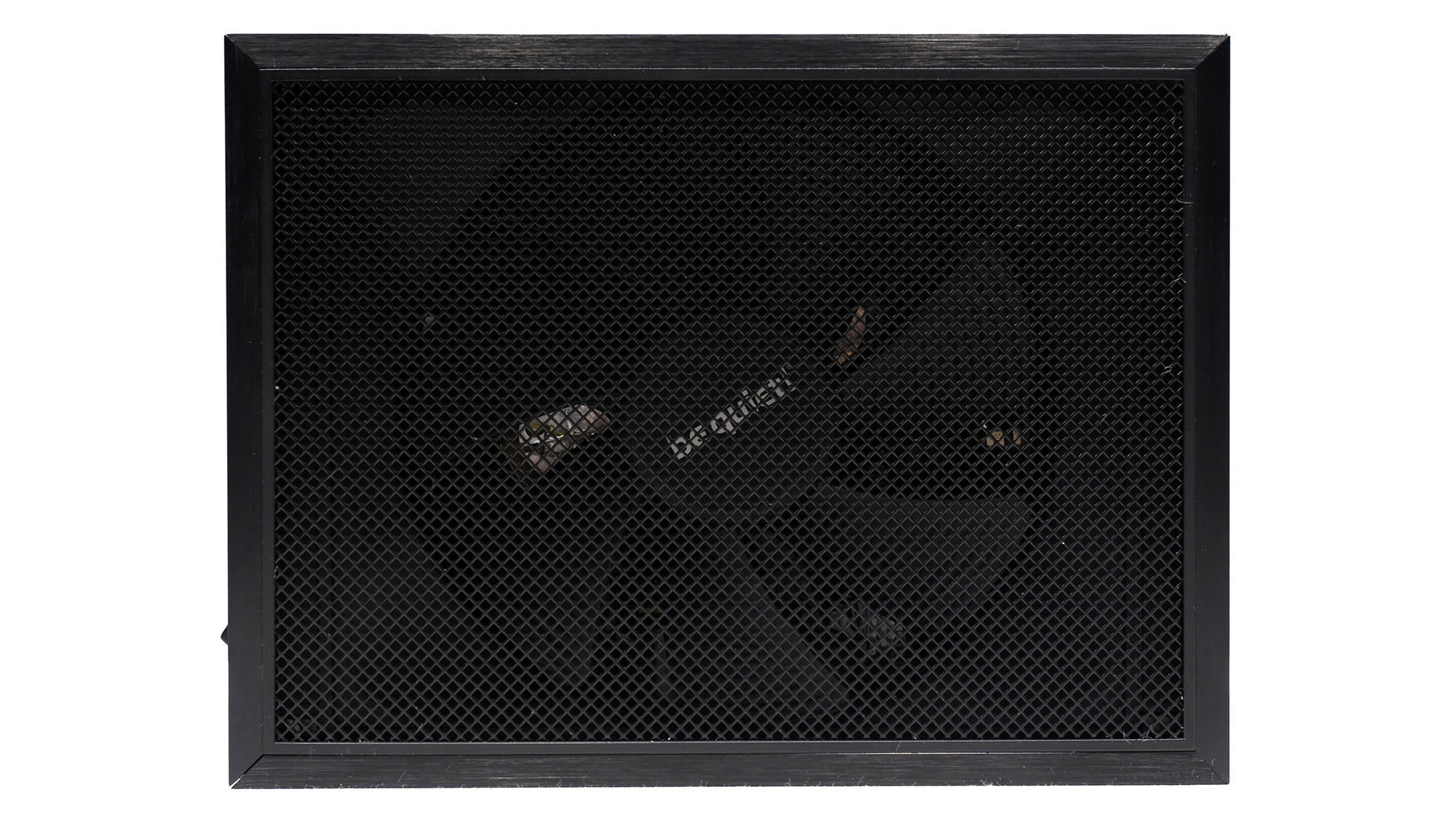
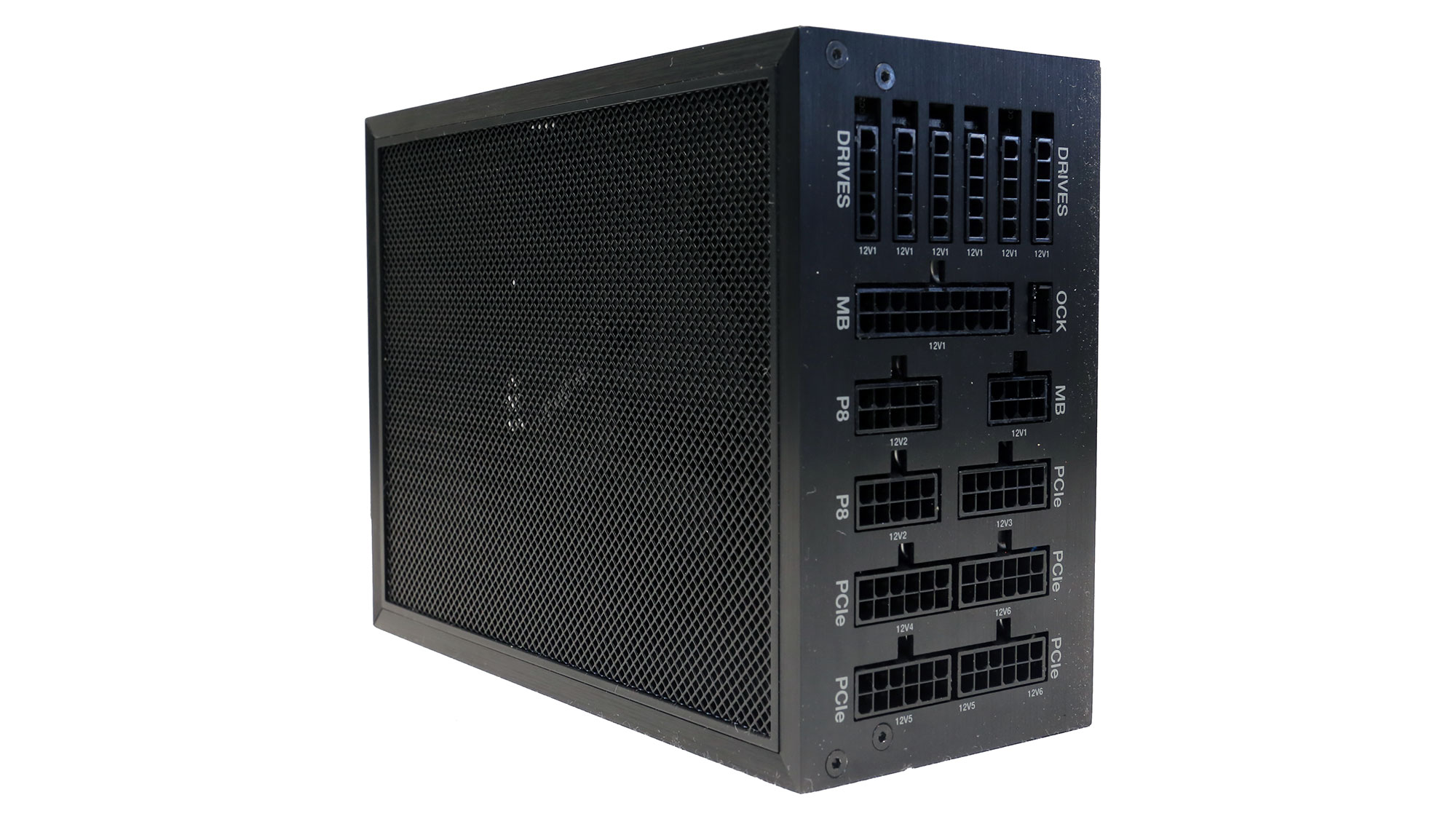
Both Dark Power Pro 12 units are 80 PLUS Titanium certified, with the 1500W model also featuring a Cybenetics ETA-A+ efficiency rating, which is even tougher to achieve. Moreover, Cybenetics rated the Dark Power Pro 12 1500W as LAMBDA-A-, which means that it is very quiet for such a powerful power supply. Nonetheless, its stronger competitor, the Corsair AX1600i, achieves an even better noise rating (LAMBDA-A).
There are several innovations in this product. For starters, its fan utilizes a frameless design for increased airflow and lower noise output. Moreover, according to be quiet! the fan speed profile is digitally controlled. Finally, there are six +12V virtual rails in total, combined into one if you use an overclocking key (jumper). Lastly, the individually sleeved cables are an added luxury, which will be highly welcomed by most users.
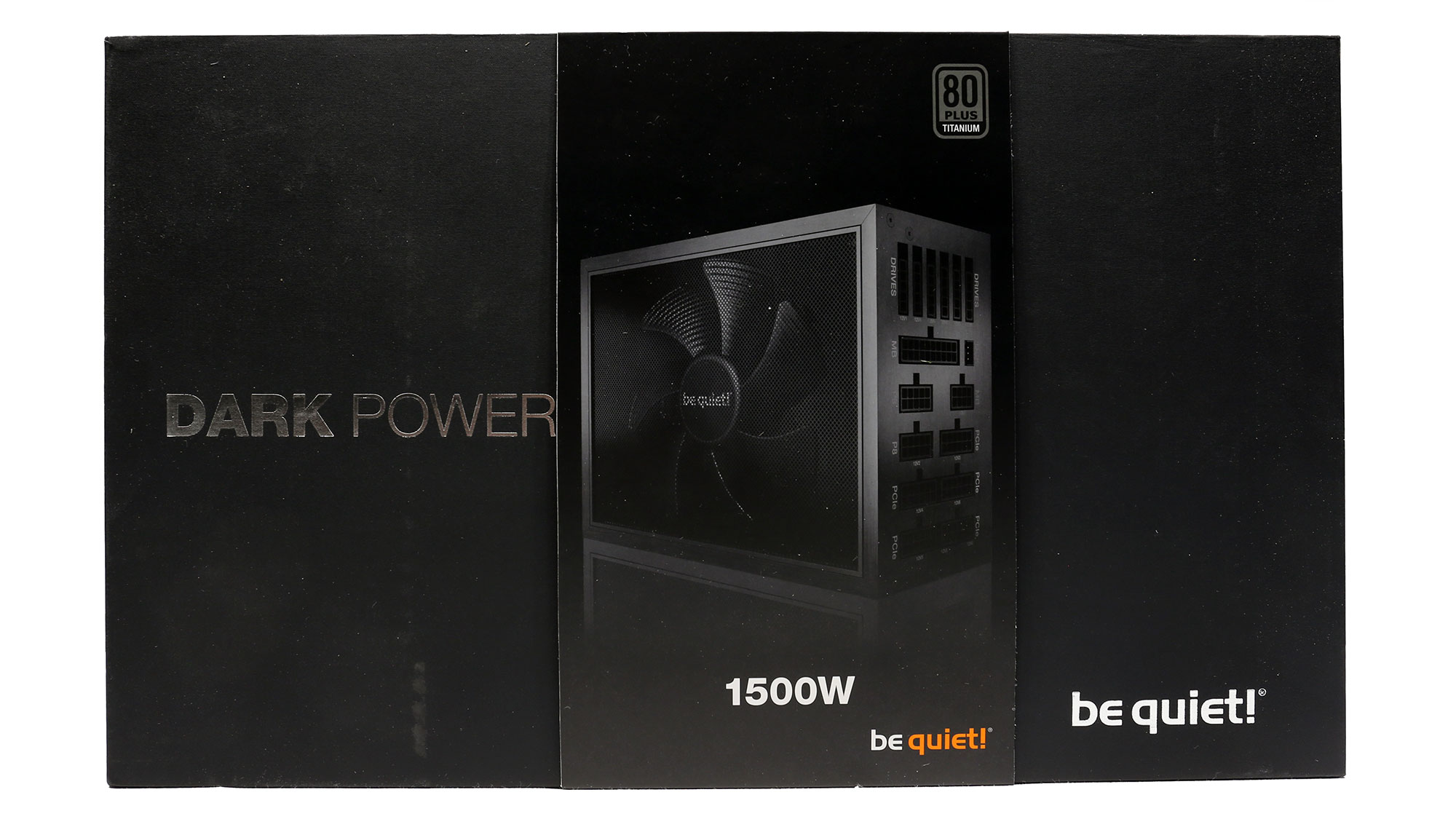
Product Photos
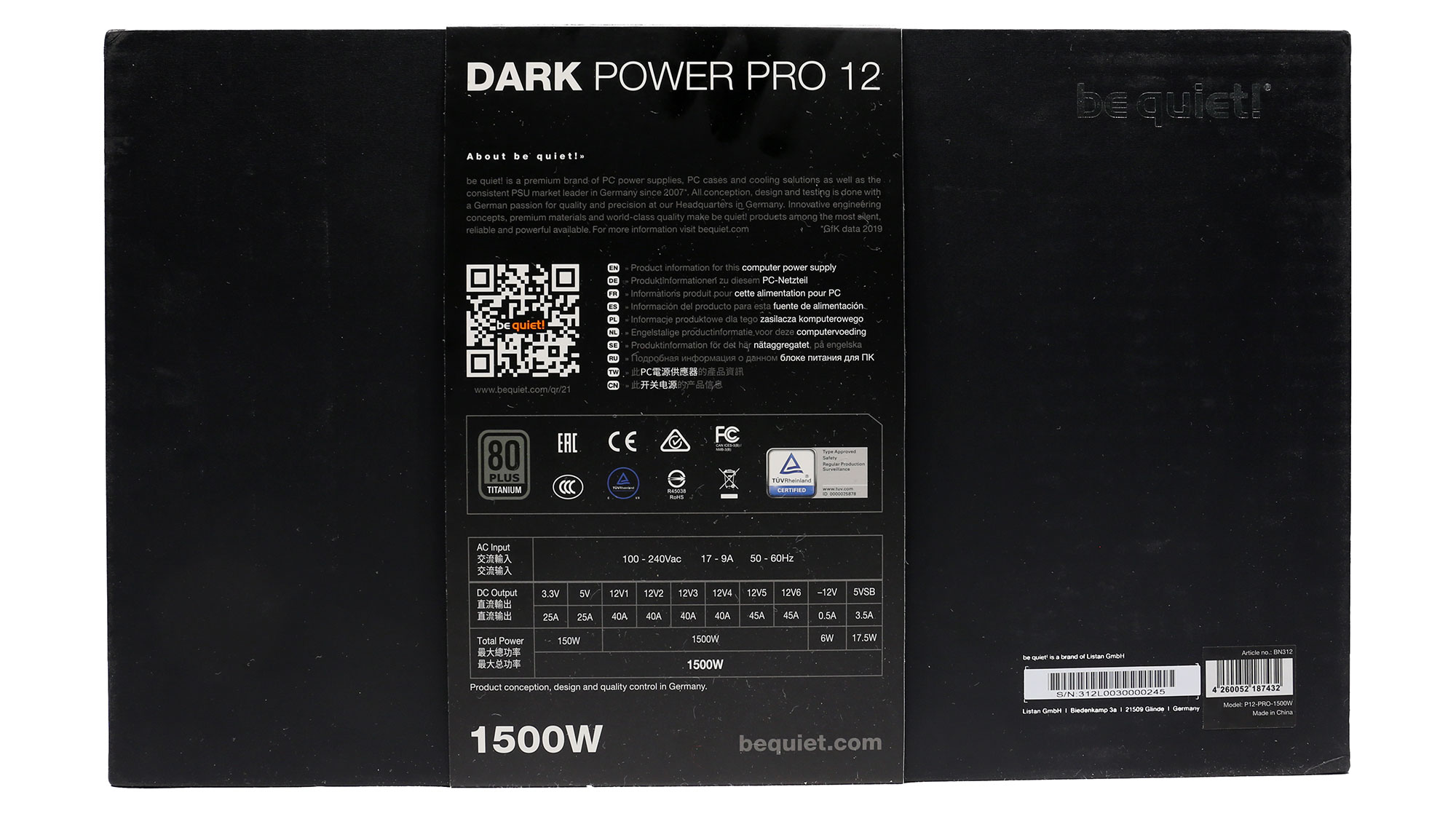
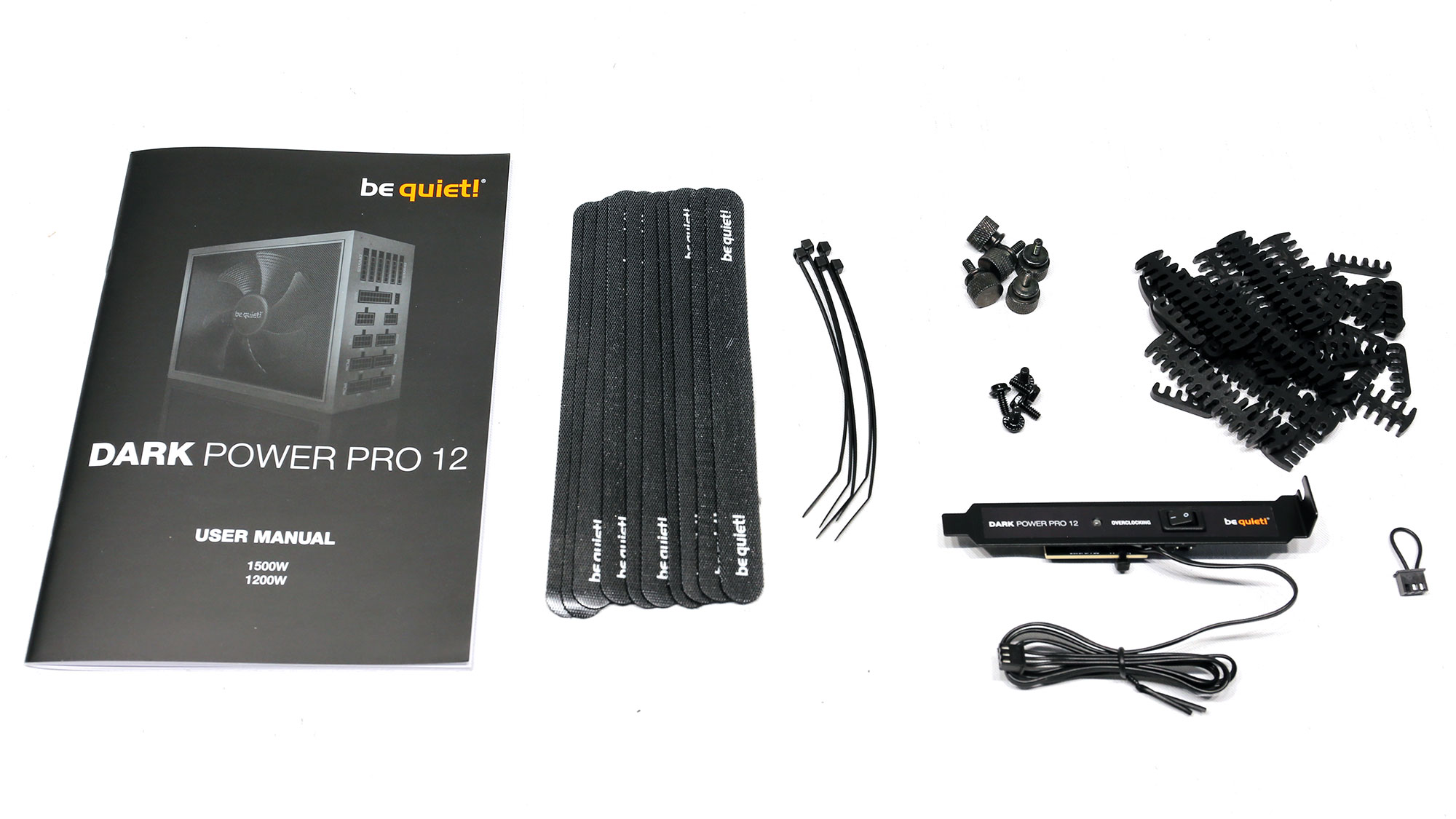
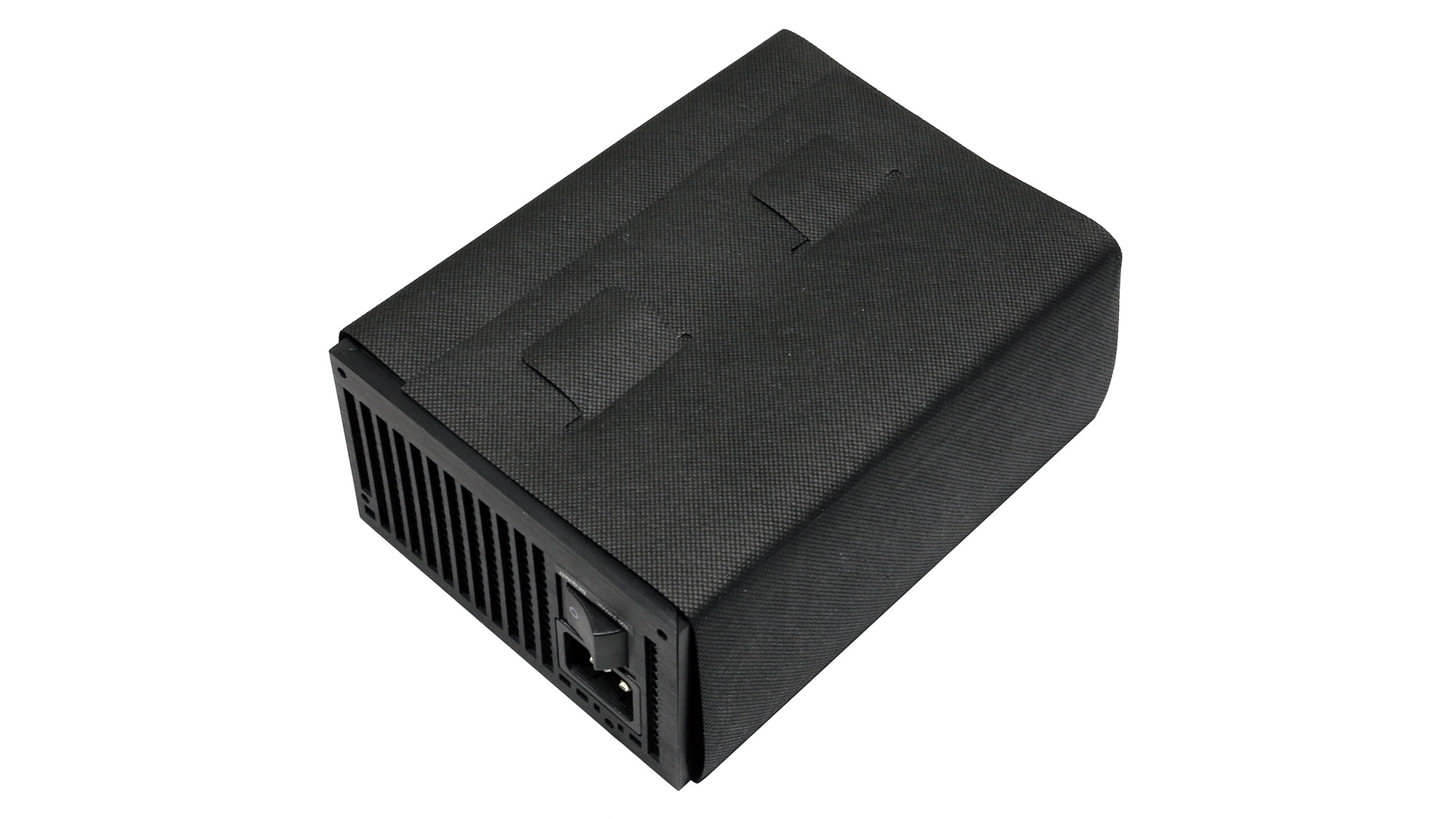
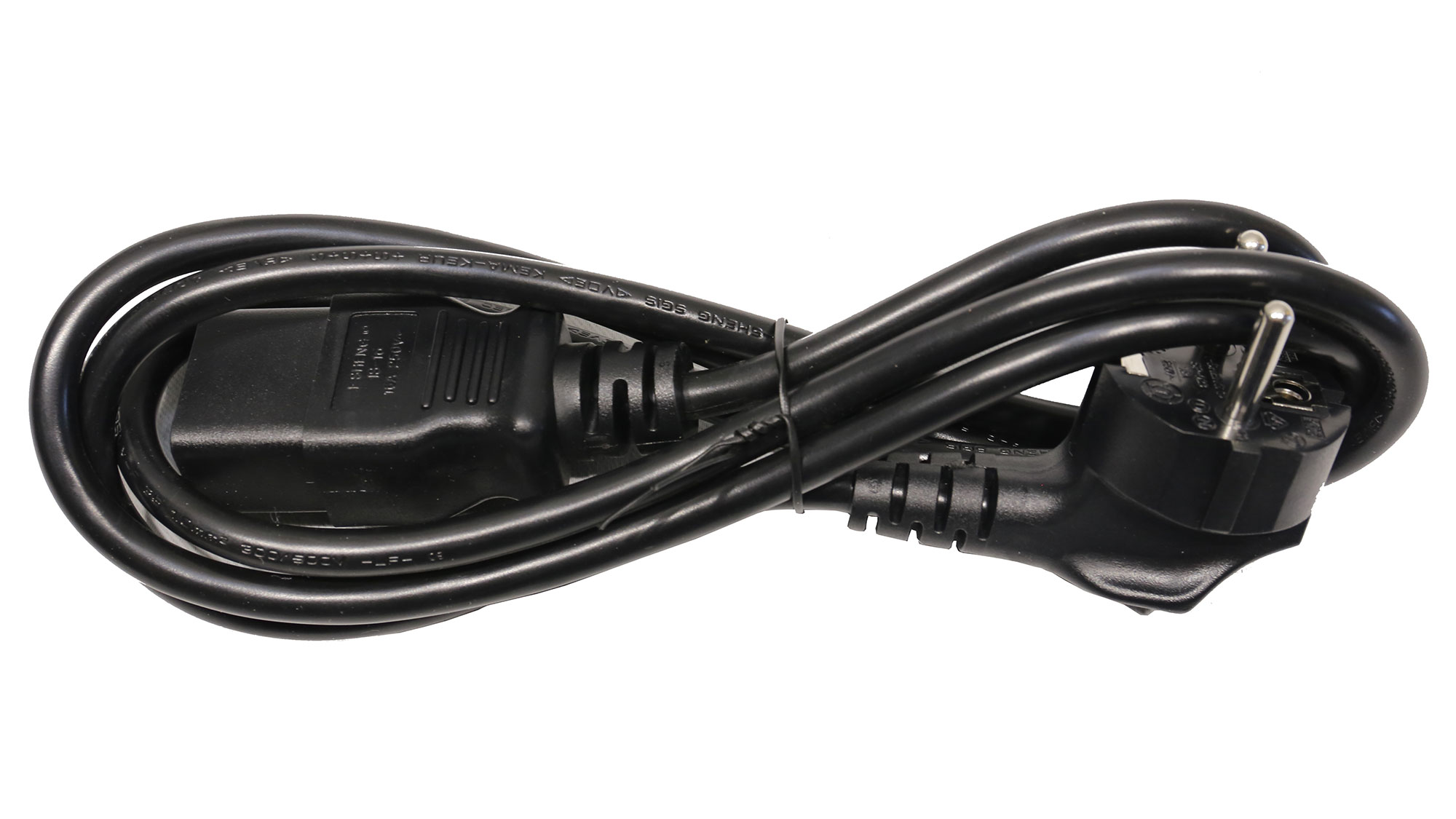
Specifications
|
Manufacturer (OEM) | CWT |
|
Max. DC Output |
1500W |
|
Efficiency |
80 PLUS Titanium, ETA-A+ (91-94%) |
|
Noise |
LAMBDA-A- (25-30 dB[A]) |
|
Modular |
✓ (Fully) |
|
Intel C6/C7 Power State Support |
✓ |
|
Operating Temperature (Continuous Full Load) |
0 - 50°C |
|
Over Voltage Protection |
✓ |
|
Under Voltage Protection |
✓ |
|
Over Power Protection |
✓ |
|
Over Current (+12V) Protection |
✓ |
|
Over Temperature Protection |
✓ |
|
Short Circuit Protection | ✓ |
|
Surge Protection |
✓ |
|
Inrush Current Protection | ✓ |
|
Fan Failure Protection | ✓ |
|
No Load Operation |
✓ |
|
Cooling |
135mm Fluid Dynamic Bearing Fan (BQ SIW3-13525-HF) |
|
Semi-Passive Operation |
✗ (selectable) |
|
Dimensions (W x H x D) |
150 x 85 x 200mm |
|
Weight |
2.37 kg (5.22 lb) |
|
Form Factor |
ATX12V v2.4, EPS 2.92 |
|
Warranty |
10 Years |
Power Specifications
| Rail | 3.3V | 5V | 12V1 | 12V2 | 12V3 | 12V4 | 12V5 | 12V6 | 5VSB | -12V | |
| Max. Power | Amps | 25 | 25 | 40 | 40 | 40 | 40 | 45 | 45 | 3.5 | 0.5 |
| Watts | 150 | 1500 | 17.5 | 6 | |||||||
| Total Max. Power (W) | 1500 |
Cables and Connectors
| Modular Cables | Cable Count | Connector Count (Total) | Gauge | In Cable Capacitors |
|---|---|---|---|---|
| ATX connector 20+4 pin (600mm) | 1 | 1 | 16-18AWG | No |
| 8 pin EPS12V (700mm) | 1 | 1 | 16AWG | No |
| 4+4 pin EPS12V (700mm) | 1 | 1 | 16AWG | No |
| 2x (6+2) pin PCIe (600mm) | 5 | 10 | 16-18AWG | No |
| SATA (600mm+150mm+150mm+150mm) | 1 | 4 | 18AWG | No |
| SATA (500mm+150mm+150mm+150mm) | 1 | 4 | 18AWG | No |
| SATA (600mm+150mm+150mm) | 1 | 3 | 18AWG | No |
| SATA (500mm+150mm+150mm) | 1 | 3 | 18AWG | No |
| SATA (600mm+150mm) / 4-pin Molex (+150mm+150mm) | 1 | 2 / 2 | 18AWG | No |
| 4-pin Molex (600mm+150mm+150mm) | 1 | 3 | 18AWG | No |
| 4-pin Molex (500mm+150mm+150mm) | 1 | 3 | 18AWG | No |
| FDD Adapter (150mm) | 2 | 2 | 22AWG | No |
| Overclocking jumper (620mm) | 1 | 1 | 26AWG | No |
| AC Power Cord (1360mm) - C19 coupler | 1 | 1 | 17AWG | - |
A large number of cables accompanies the PSU. This is expected, of course, given the huge capacity. All cables are super long and individually sleeved, with adequate distance between them.
Besides two EPS connectors, you also get ten PCIe ones, so you can easily build the gaming system of your dreams or a powerful workstation.

Cable Photos
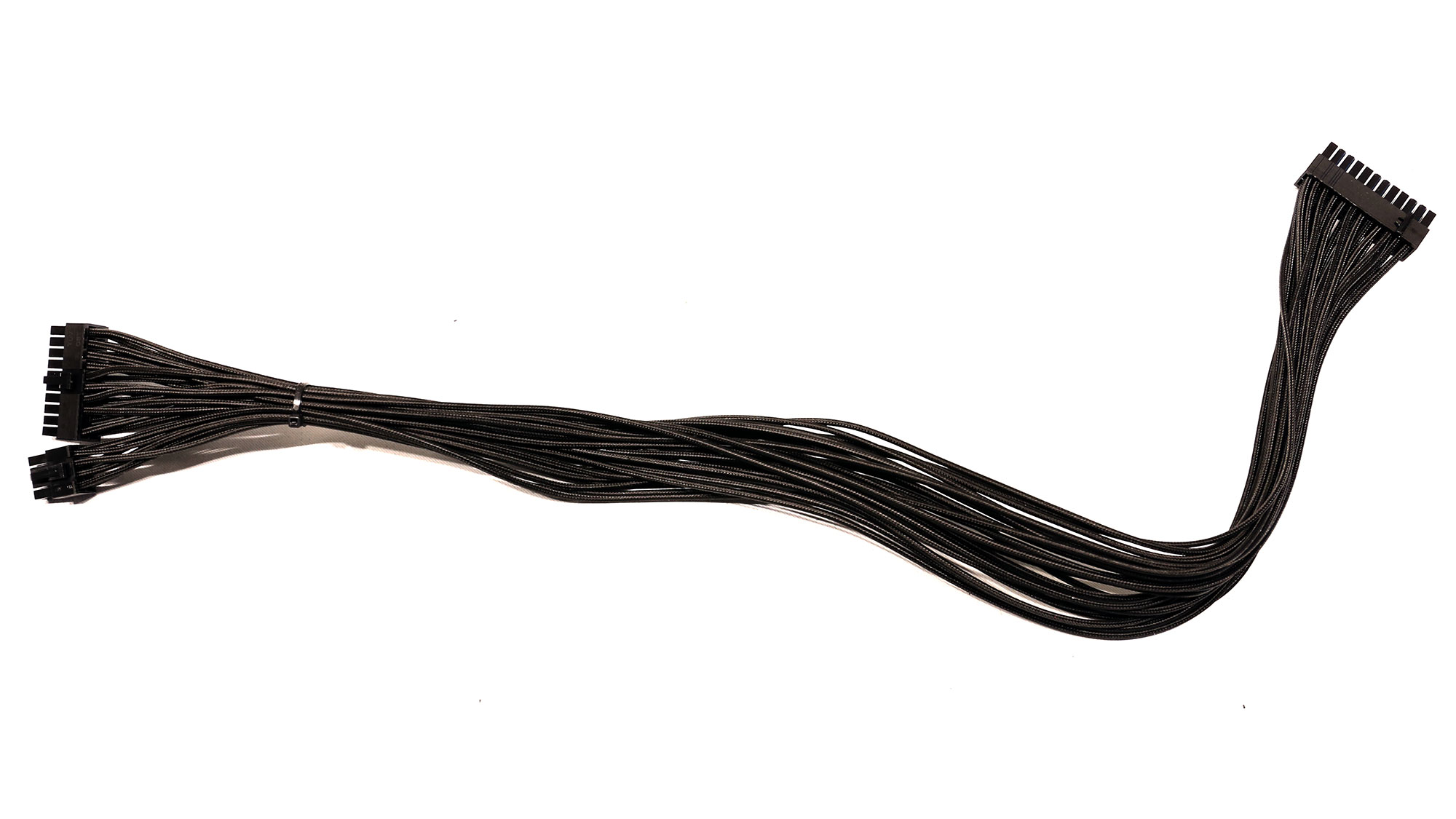


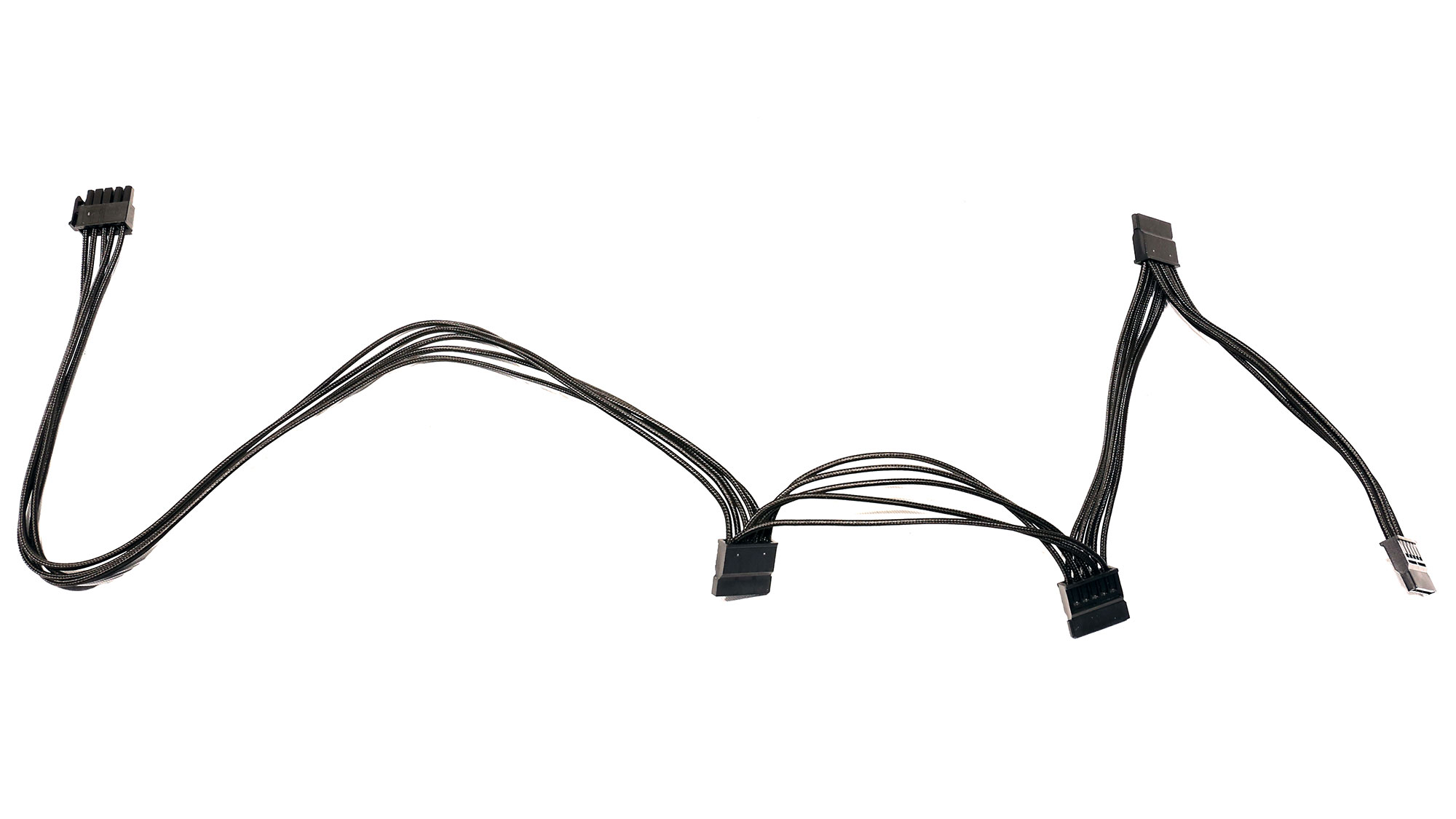
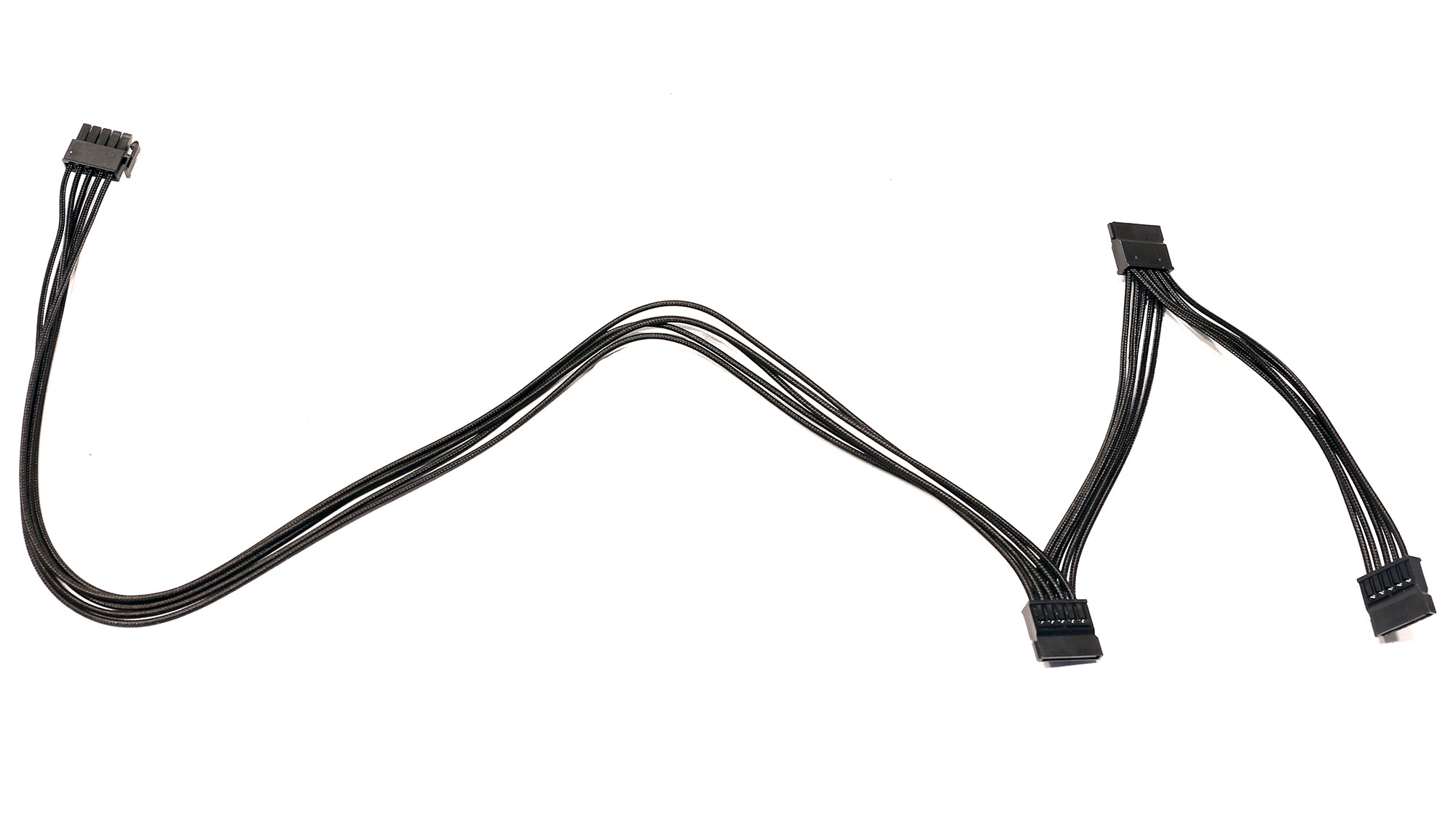
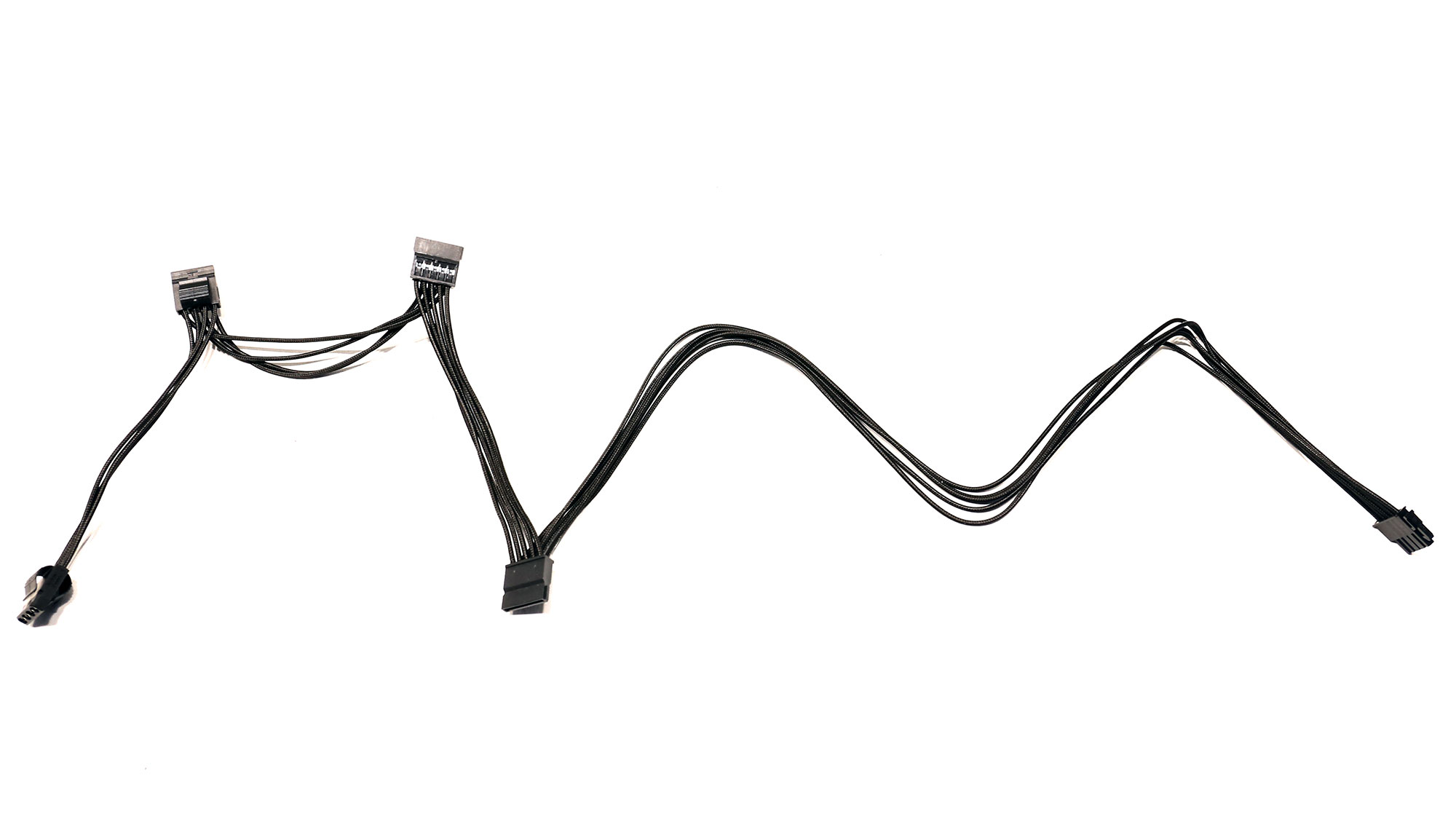
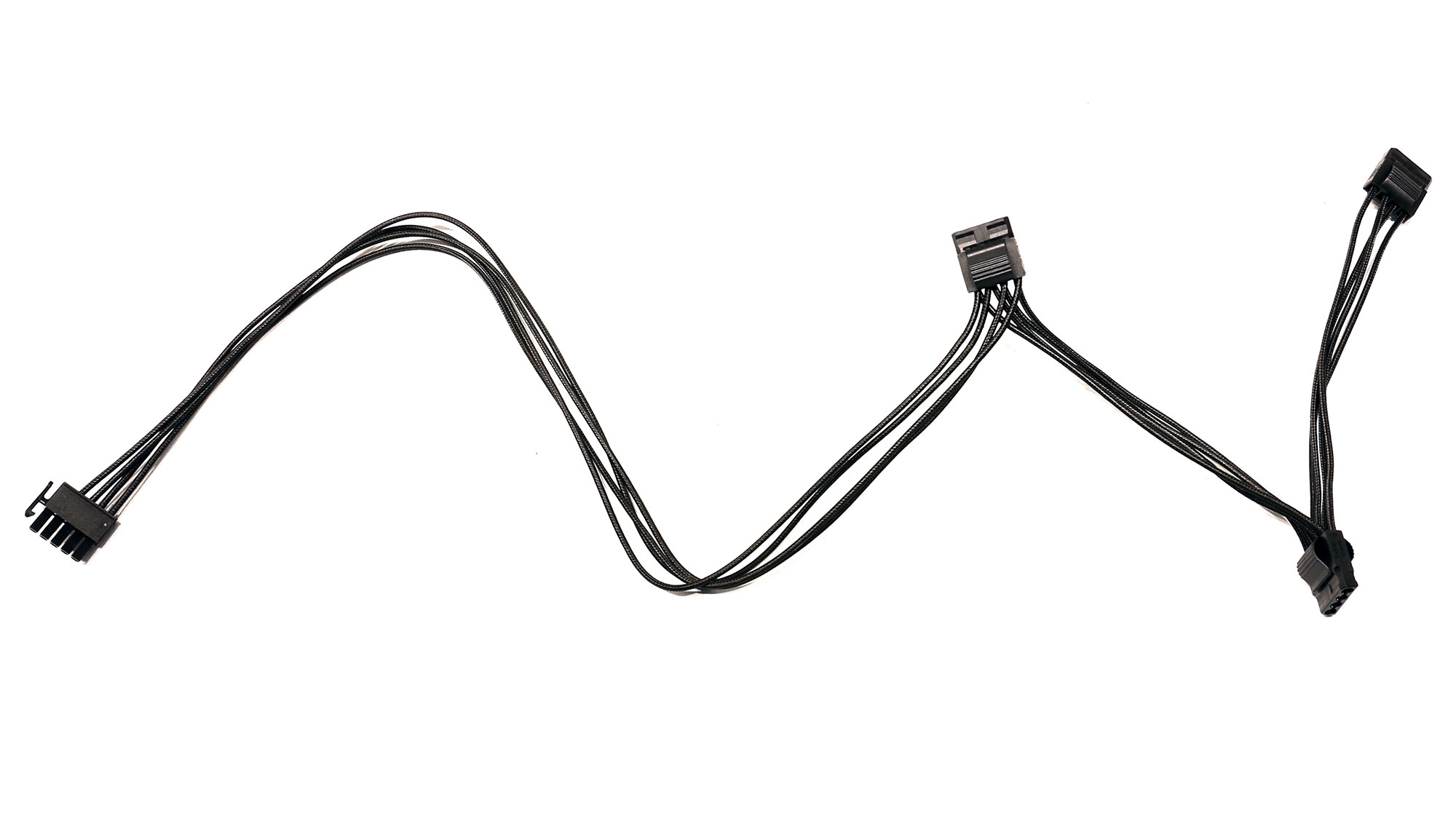
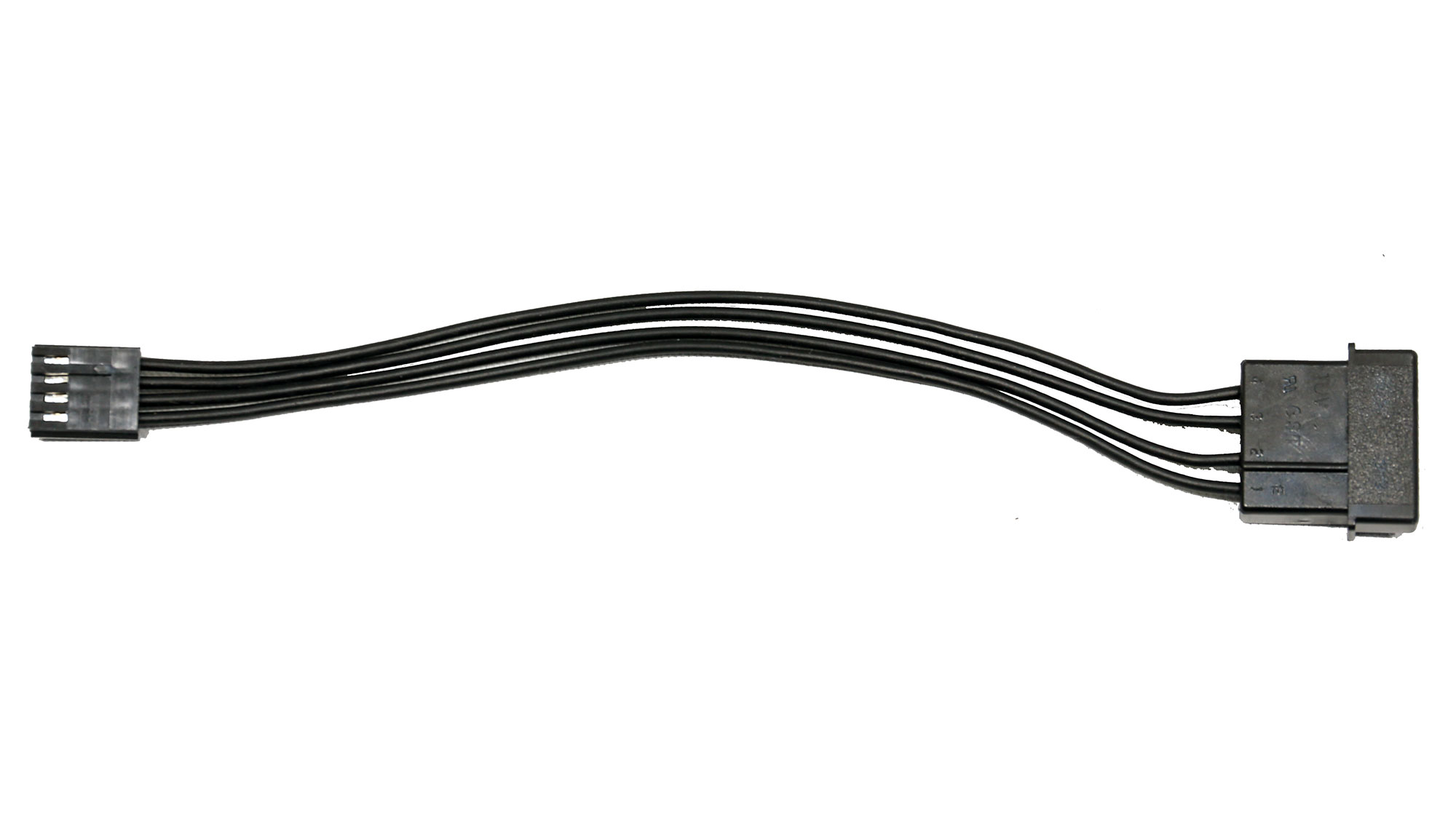
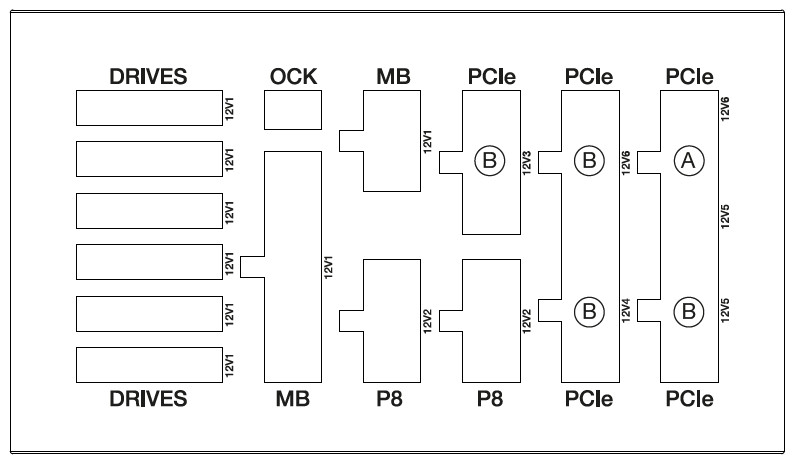
If you decide not to use the overclocking key jumper, which combined all 12V rails in one, you should pay attention to the scheme shown above. It explains the power distribution of the 12V rail among the PSU's sockets.
Get Tom's Hardware's best news and in-depth reviews, straight to your inbox.
If you need up to two PCIe connectors, use connector A. If you need more, use the connectors marked as B and leave A last. If you follow the above instructions, you will have balanced power distribution.
Component Analysis
We strongly encourage you to have a look at our PSUs 101 article, which provides valuable information about PSUs and their operation, allowing you to better understand the components we're about to discuss.
| General Data | - |
| Manufacturer (OEM) | CWT |
| PCB Type | Double Sided |
| Primary Side | - |
| Transient Filter | 6x Y caps, 2x X caps, 2x CM chokes, 1x MOV, 1x Champion CM02X (Discharge IC) |
| Inrush Protection | NTC Thermistor SCK-037 (3 Ohm) & Relay |
| Bridge Rectifier(s) | 2x WeEn WNR2560M |
| APFC MOSFETs | 2x On Semiconductor FCH040N65S3 (650V, 41A @ 100°C, Rds(on): 40mOhm) & 2x On Semiconductor FCPF067N65S3 (650V, 28A @ 100°C, Rds(on): 67mOhm) |
| APFC IC Drivers | 2x On Semiconductor NCP81071 |
| APFC Boost Diode | 2x Infineon IDH10G65C6 (650V, 10A @ 140°C) |
| Bulk Cap(s) | 2x Nippon Chemi-Con (400V, 680uF each or 1360uF combined, 2,000h @ 105°C, KMW) & 1x Nippon Chemi-Con (400V, 470uF, 2,000h @ 105°C, KMW) |
| Main Switchers | 4x Alpha & Omega AOTF29S50 (500V, 18A @ 100°C, Rds(on): 0.4Ohm) |
IC Drivers | 2x Silicon Labs Si8233BD |
| Digital Controllers | 2x Texas Instruments UCD3138A |
| Topology | Primary
side: Semi-Digital, Interleaved PFC, Full-Bridge & LLC converter Secondary side: Synchronous Rectification & DC-DC converters |
| Secondary Side | - |
| +12V MOSFETs | 12x On Semiconductor NTMFS5C612N (60V, 160A @ 100°C, Rds(on): 1.6mOhm) |
| 5V & 3.3V | DC-DC Converters: 6x PWM Controllers: 1x |
| Filtering Capacitors | Electrolytic: 4x Nichicon (2-5,000h @ 105°C, HD), 2x Rubycon (6-10,000h @ 105°C, ZLH), 2x Nippon Chemi-Con (4-10,000h @ 105°C, KY), 1x Nippon Chemi-Con (1-5,000h @ 105°C, KZE) |
| Supervisor IC | Weltrend WT7502R (OVP, UVP, SCP, PG) & Weltrend WT7518 (4x channels OCP) |
| Fan Model | be quite! BQ SIW3-13525HF (135mm, 12V, 0.56A, Fluid Dynamic Bearing Fan) |
| 5VSB Circuit | - |
| Rectifier | 1x IPS ISD04N65A (650V, 4A, Rds(on): 2.2Ohm) FET & 1x PS1045L (45V, 10A) SBR |
| Standby PWM Controller | On-Bright OB5282 |

Overall Photos

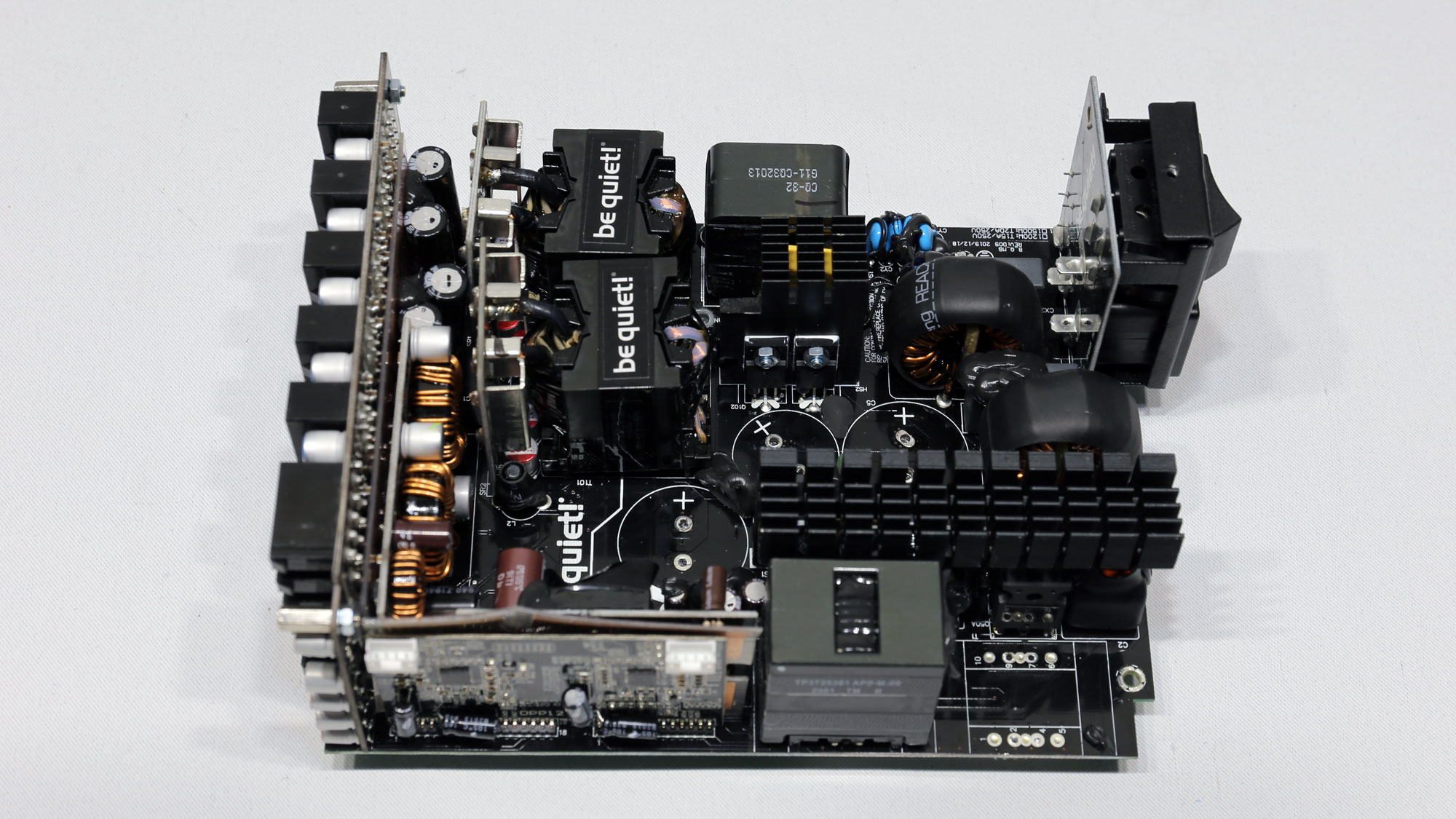

Although CWT used digital controllers to control the APFC converter along with the primary switching FETs and the +12V regulation circuit, still the minor rails and the 5VSB circuit use analog controllers. Moreover, this platform isn't as advanced as in the Corsair AX1600i and the Wentai Aidan-T1616 units. There is no Bridgeless totem-pole PFC and GaN MODFETs, a state-of-the-art combination that allows for up to 99% efficiency in the APFC converter.
If you want to learn more about the totem-pole PFC converter, take a look at the review of the AX1600i.
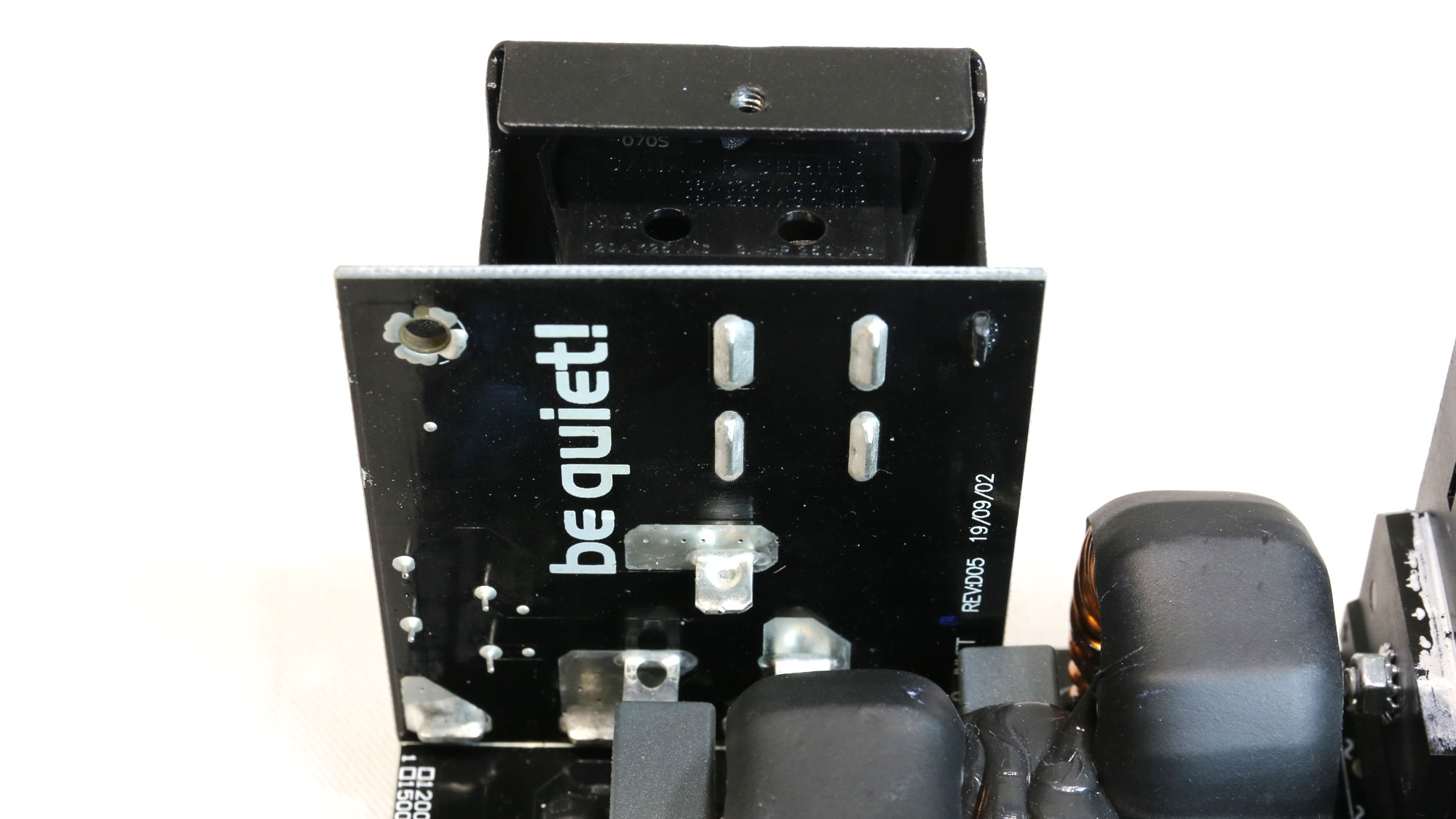
Transient filter

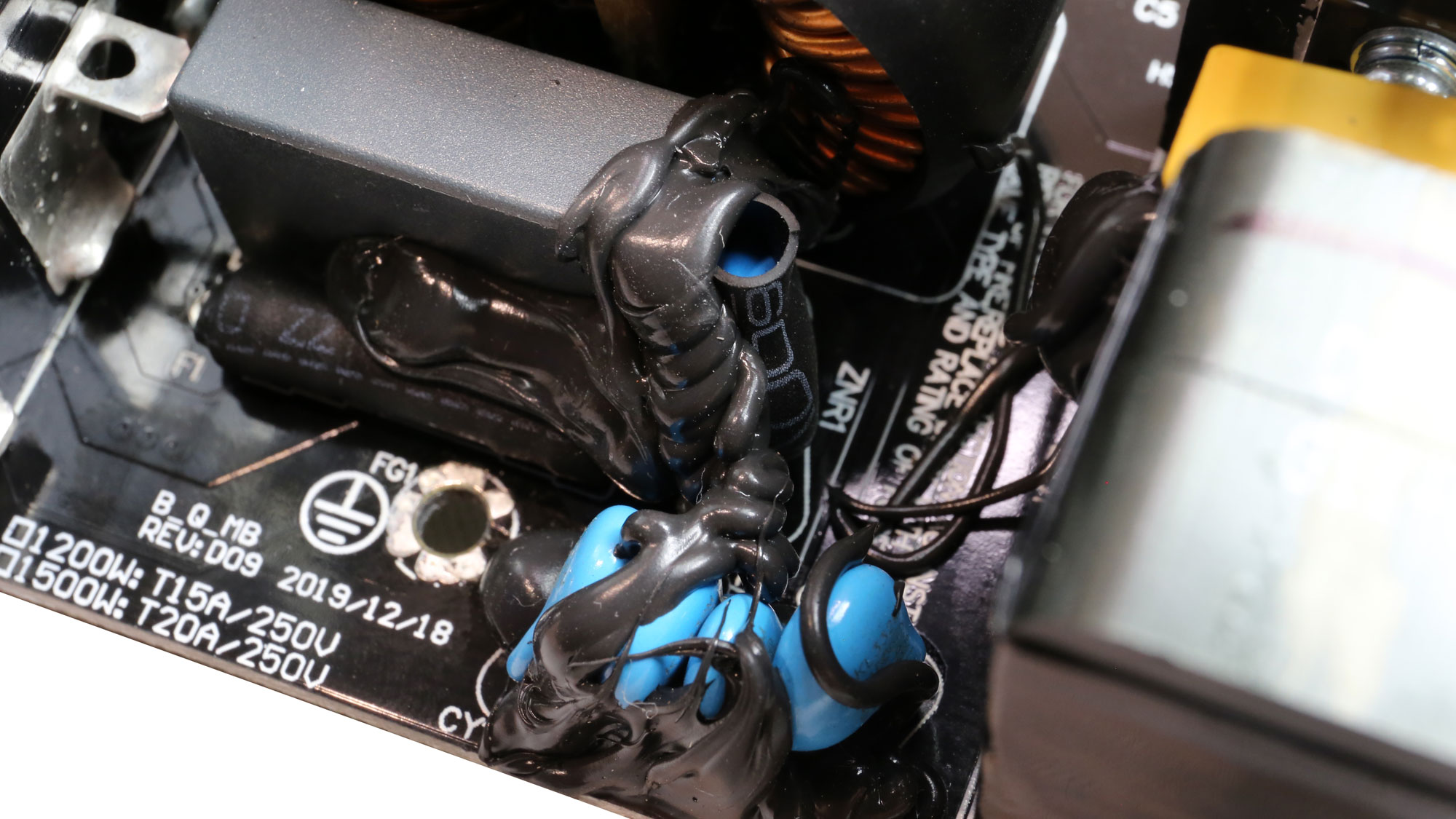
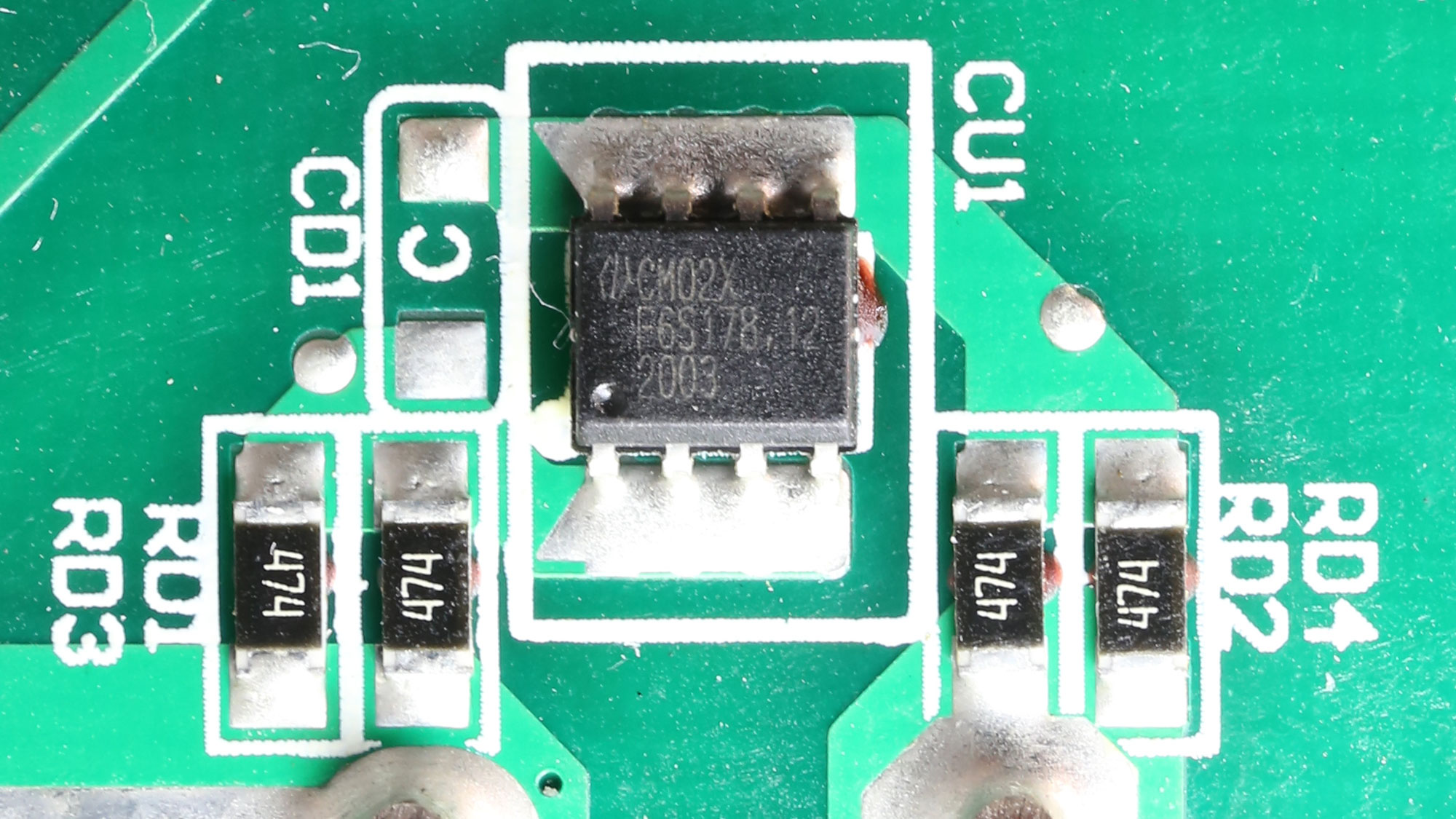

The transient/EMI filter has more than enough parts to do a good job. Still, we noticed several high EMI spurs during the EMC pre-compliance test that we conducted.
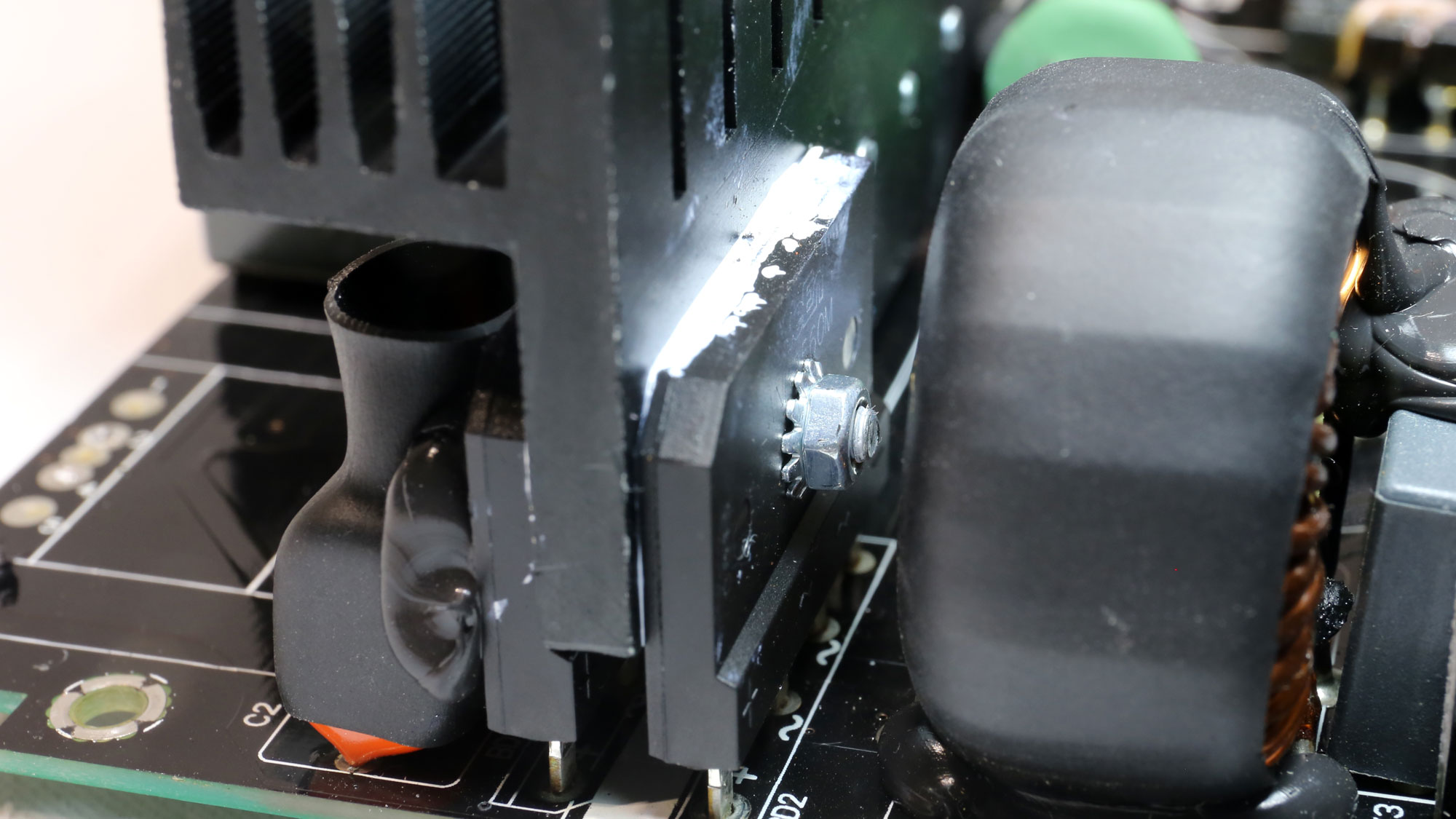
Bridge rectifiers
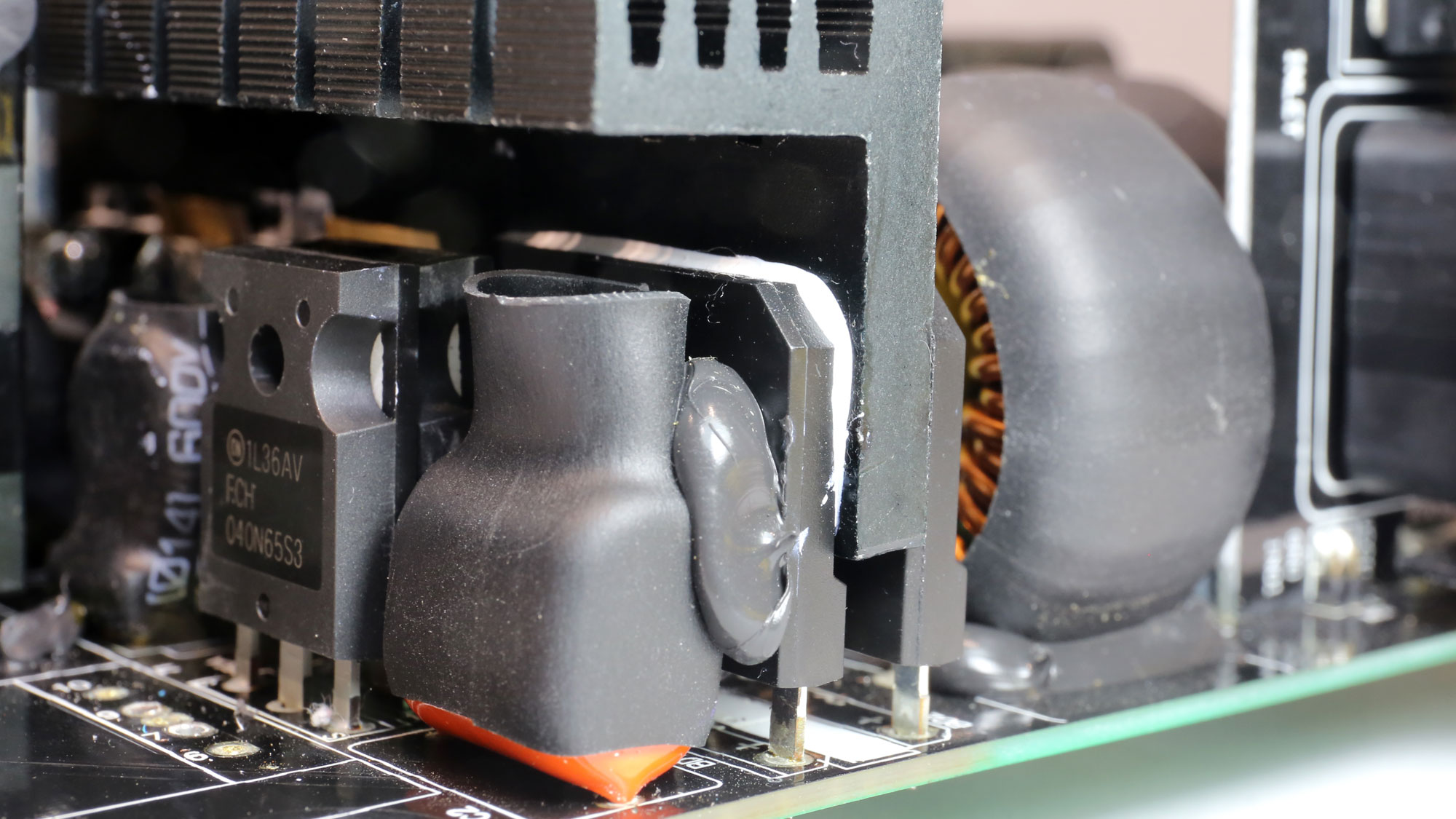
There are two powerful bridge rectifiers. Combined, they can handle up to 50 Amperes of current.
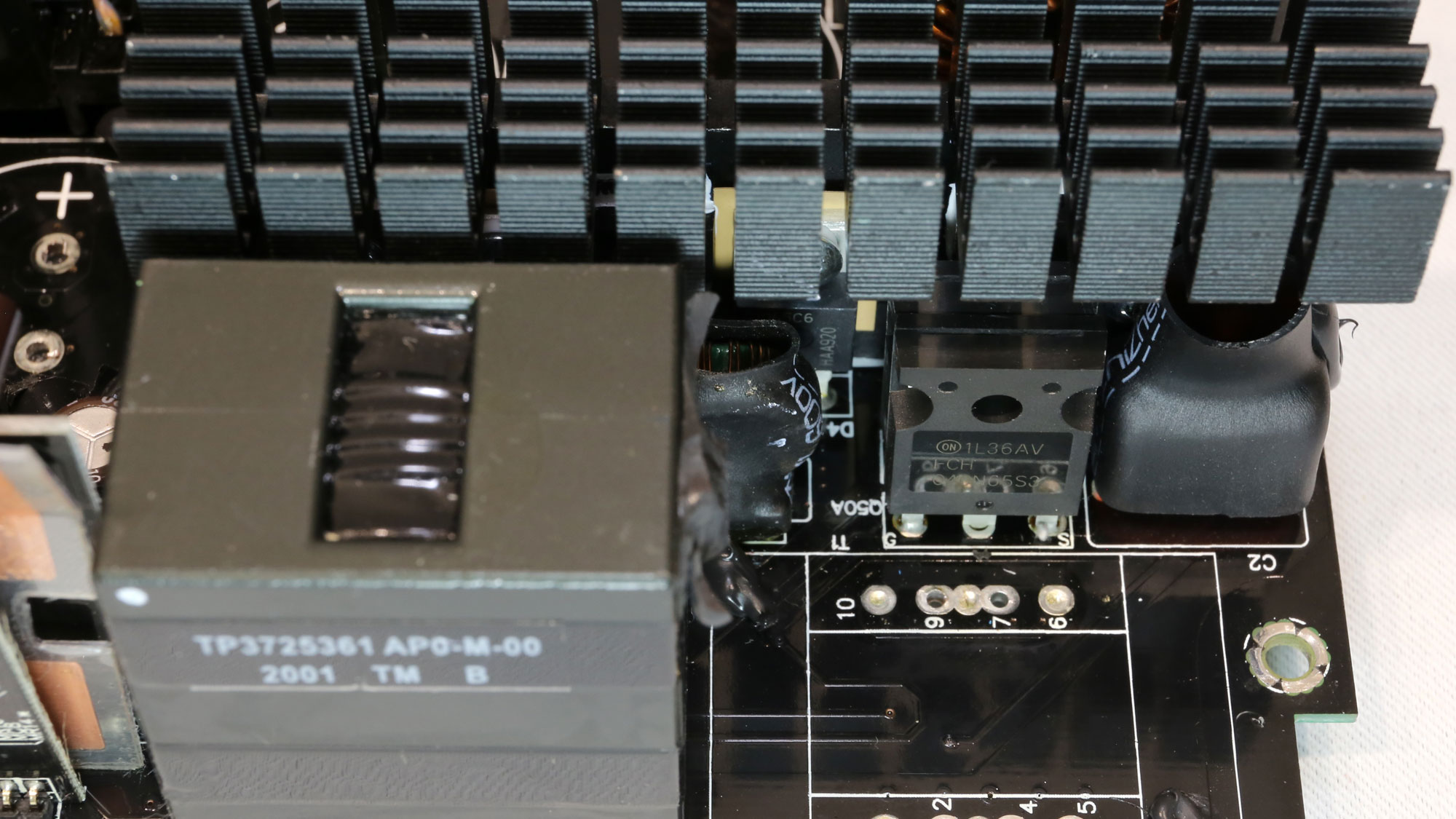
APFC converter
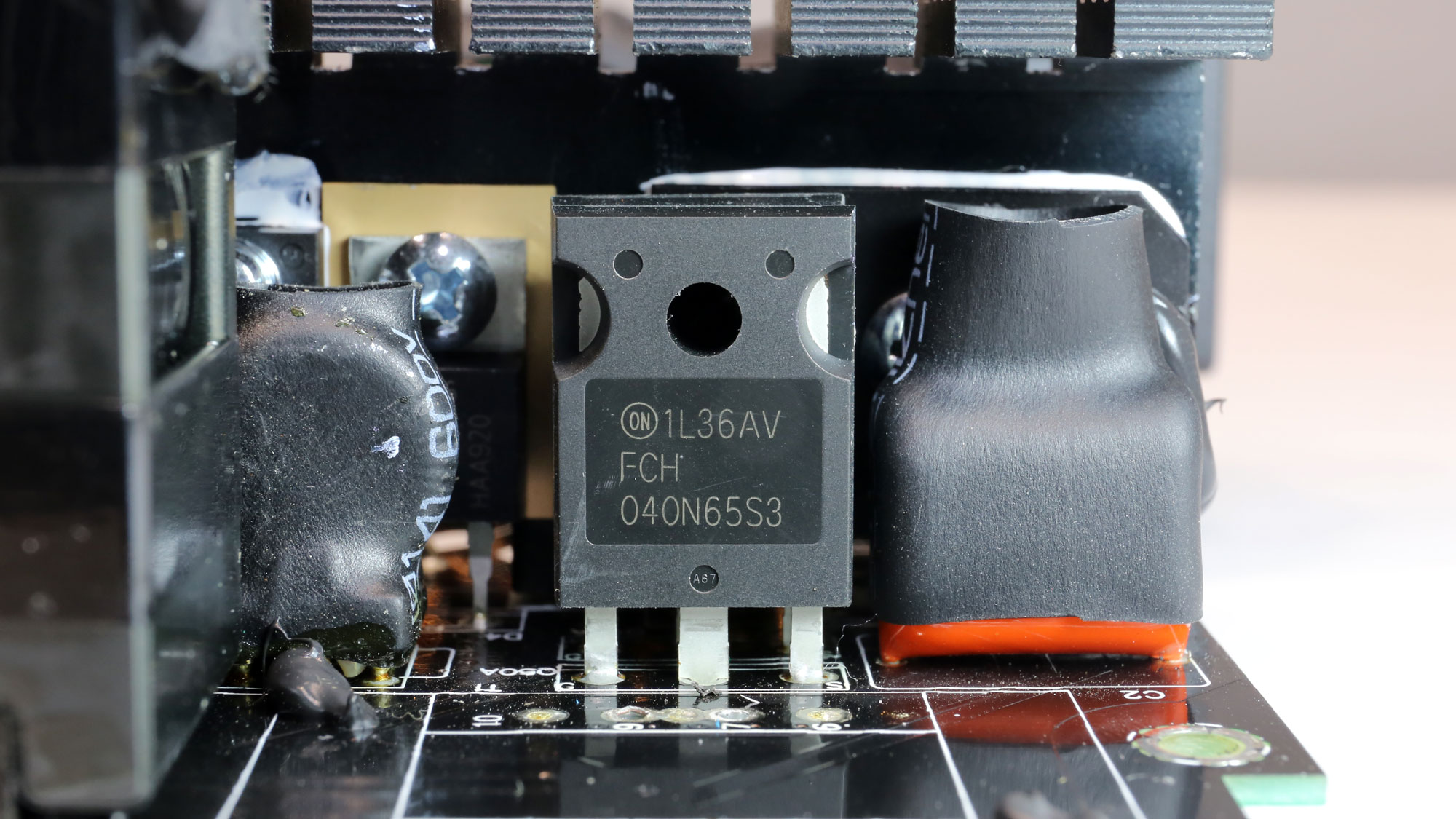
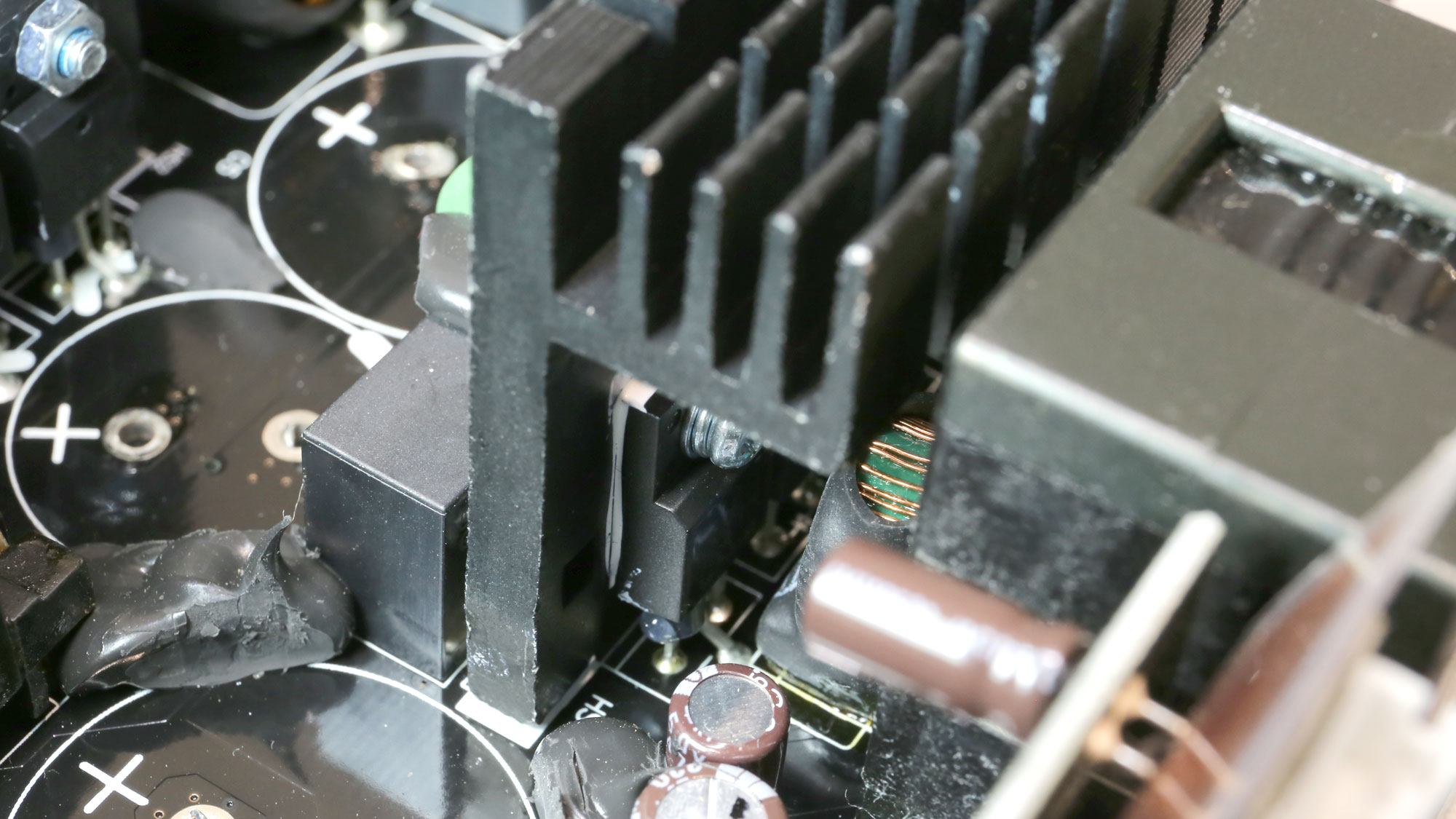

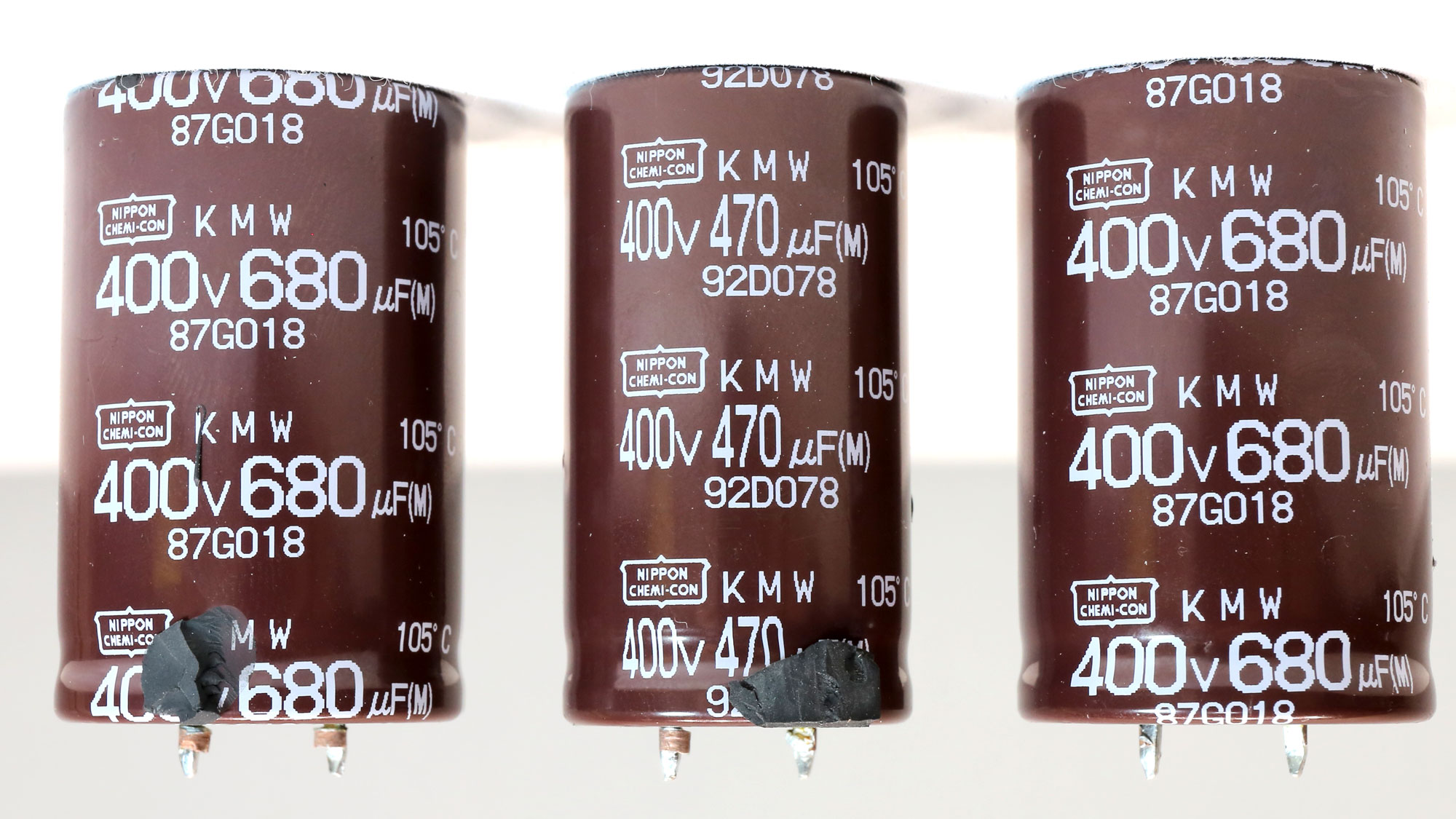
The power supply uses an interleaved PFC converter, meaning that two APFC converters operate in parallel with a phase difference between them. This minimizes input/output current ripple and lowers conduction losses, increasing efficiency, and doubling the effective switching frequency.
Since there was no space on the APFC heat sink, two FETs had to be left out. This is why CWT used two beefy and two standard FETs in this converter. It is a great shame, though, that they didn't choose a bridgeless totem-pole PFC converter, which would offer up to 3% higher efficiency. The digital control that this PSU has is ideal for this kind of PFC converter.
The bulk caps have a high capacity, 1830uF in total. So we expect a pretty long hold-up time, although this also has to do with the programming of the main PWM controller.
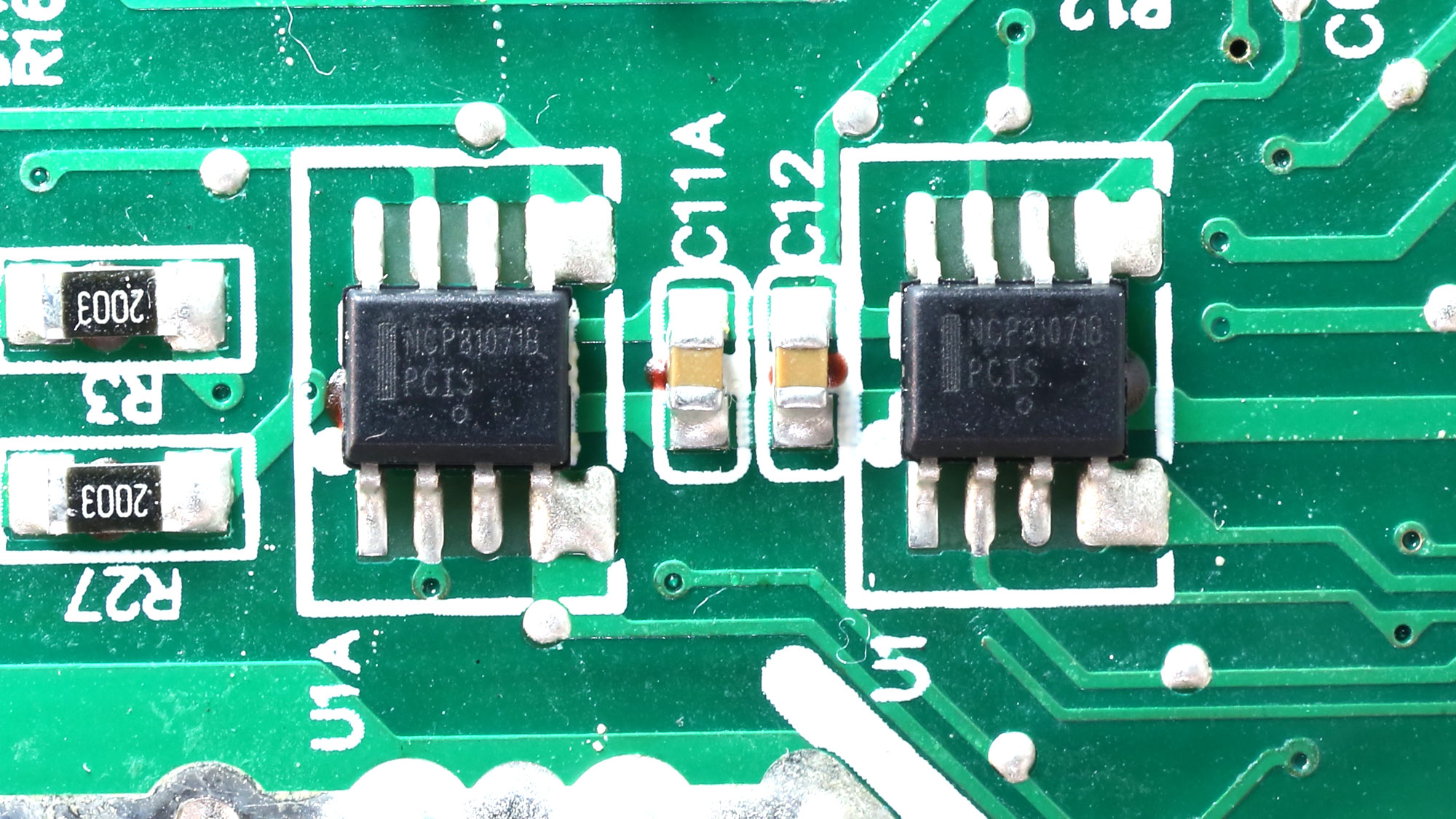
A pair of driver ICs handle all four FETs of the PFC converter.
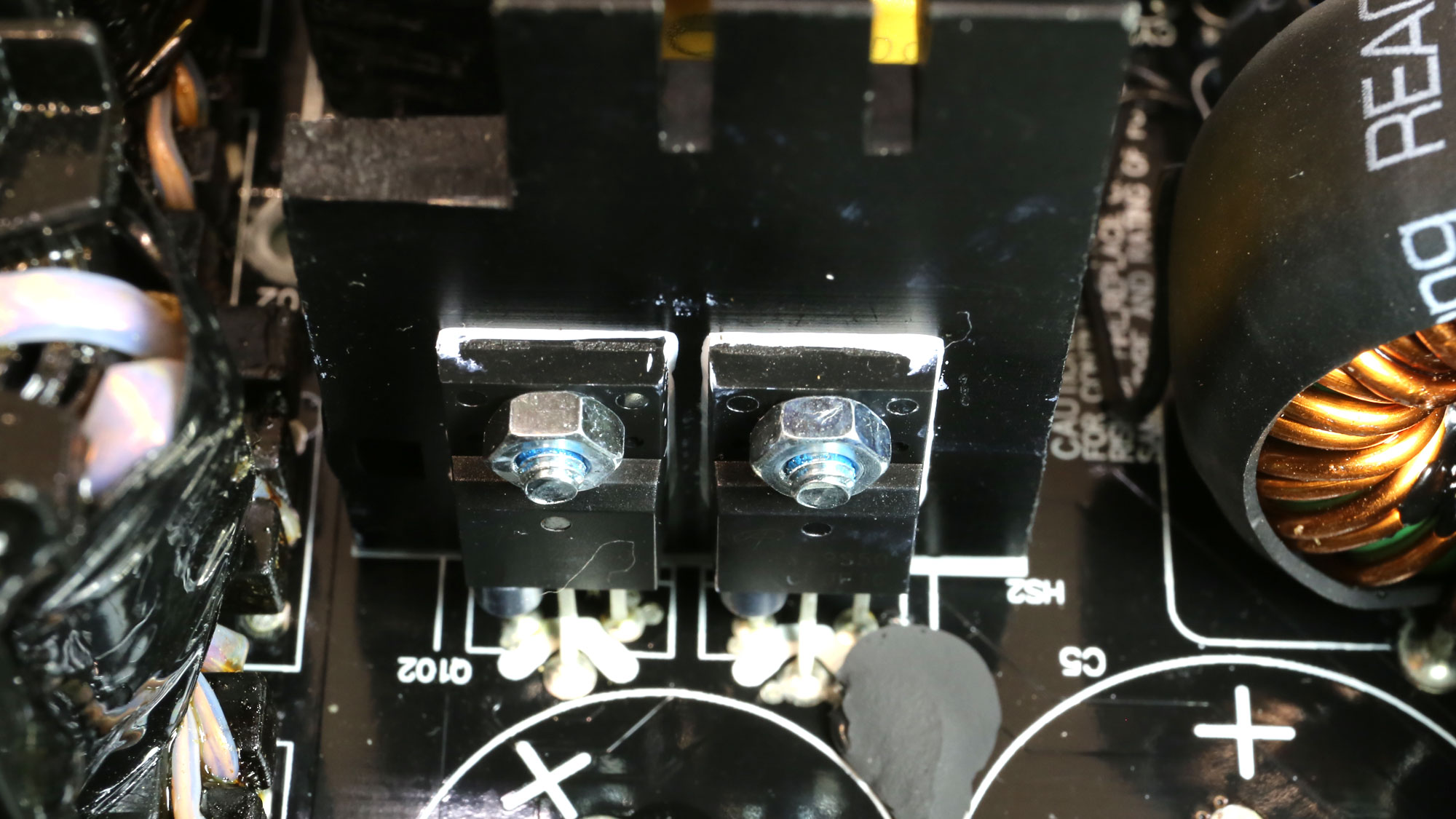
Main FETs and primary transformer
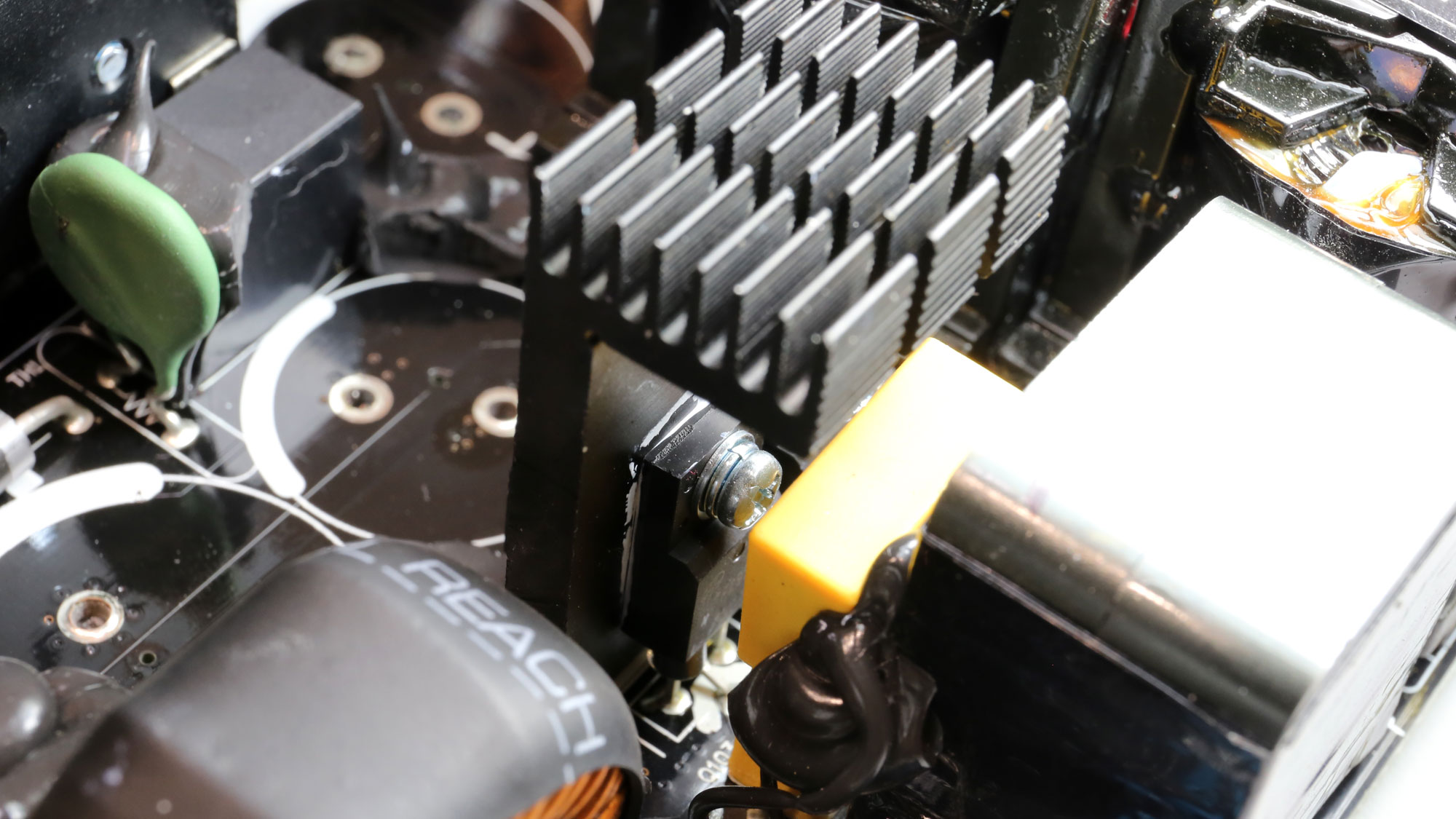
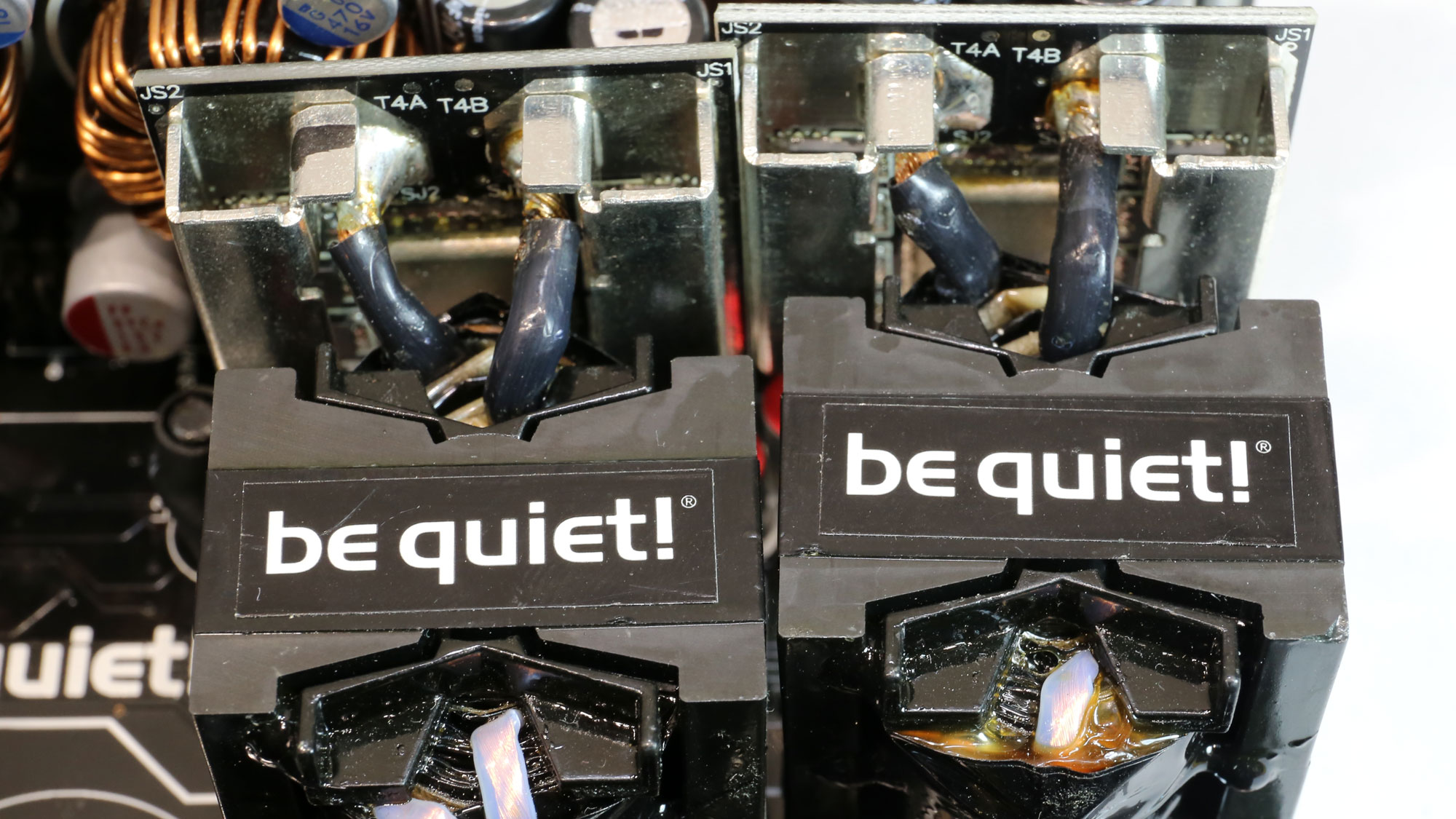
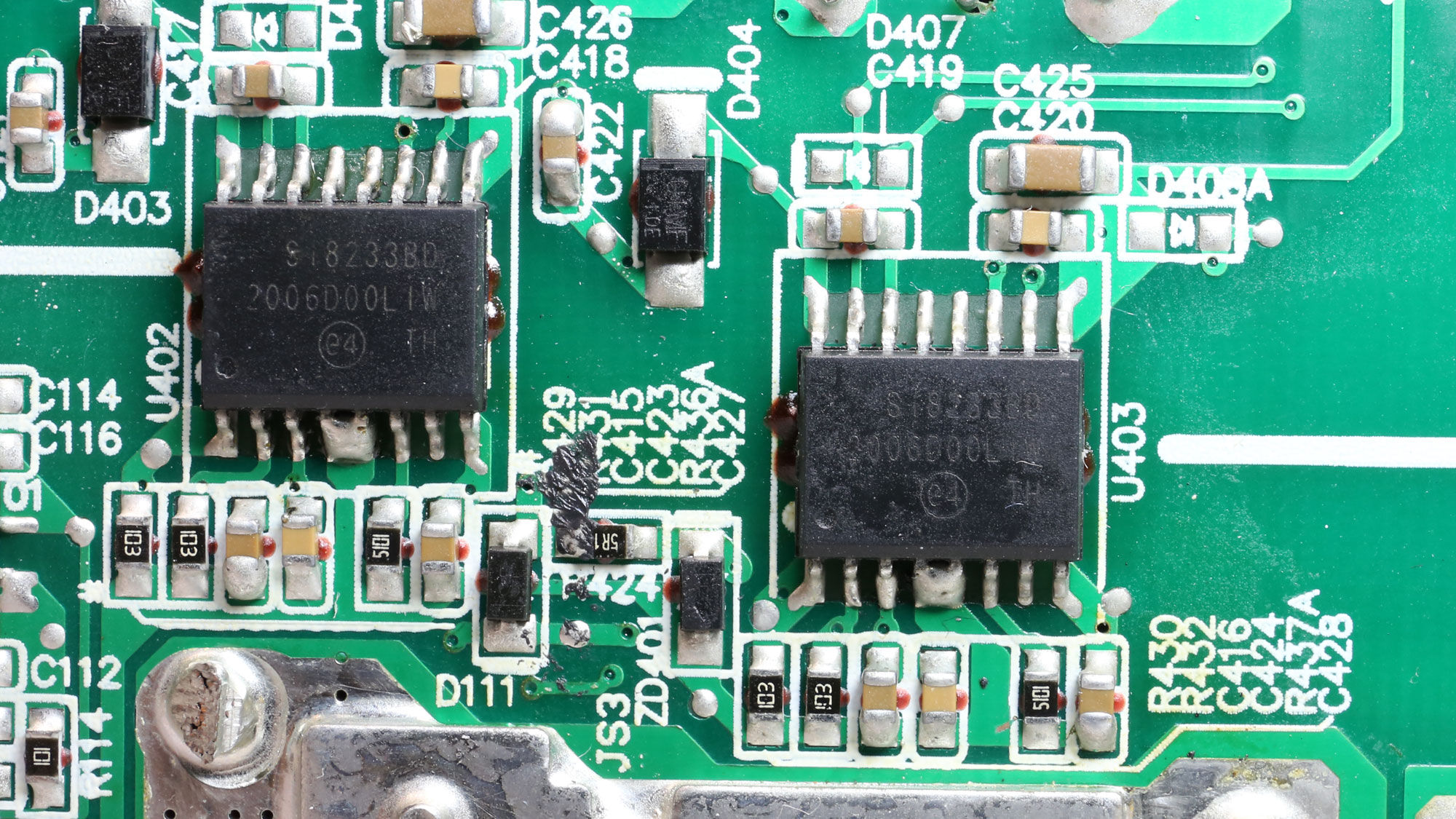
The four primary switching FETs are arranged into a full-bridge topology. Typically, an LLC resonant converter is also used, to boost efficiency through the lossless switching of the primary FETs. Lastly, the IC drivers that handle the primary FETs are two Si8233BD, provided by Silicon Labs.
Since there was no room for one large, main transformer, CWT had to use two smaller ones.
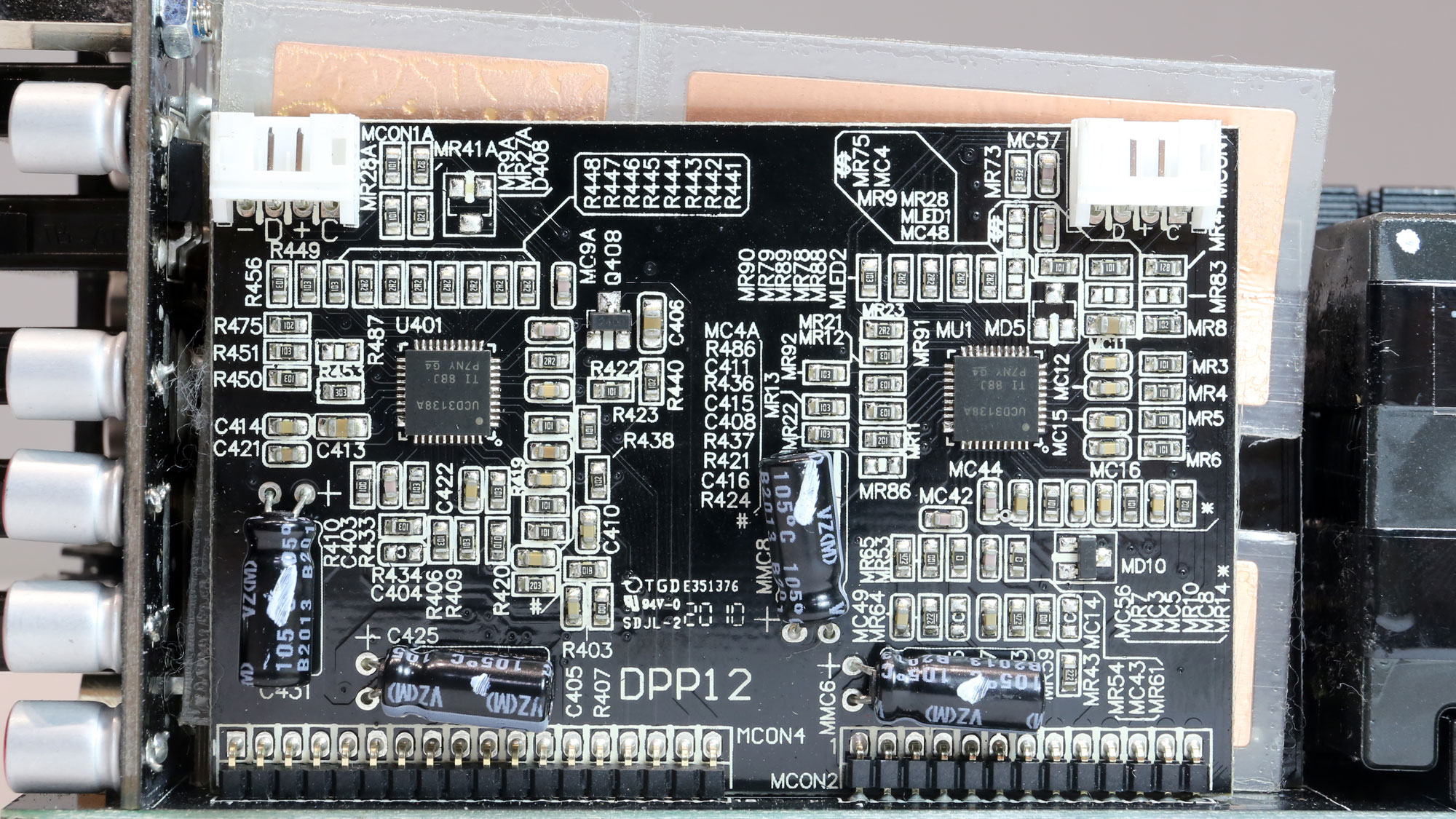
Digital Controllers
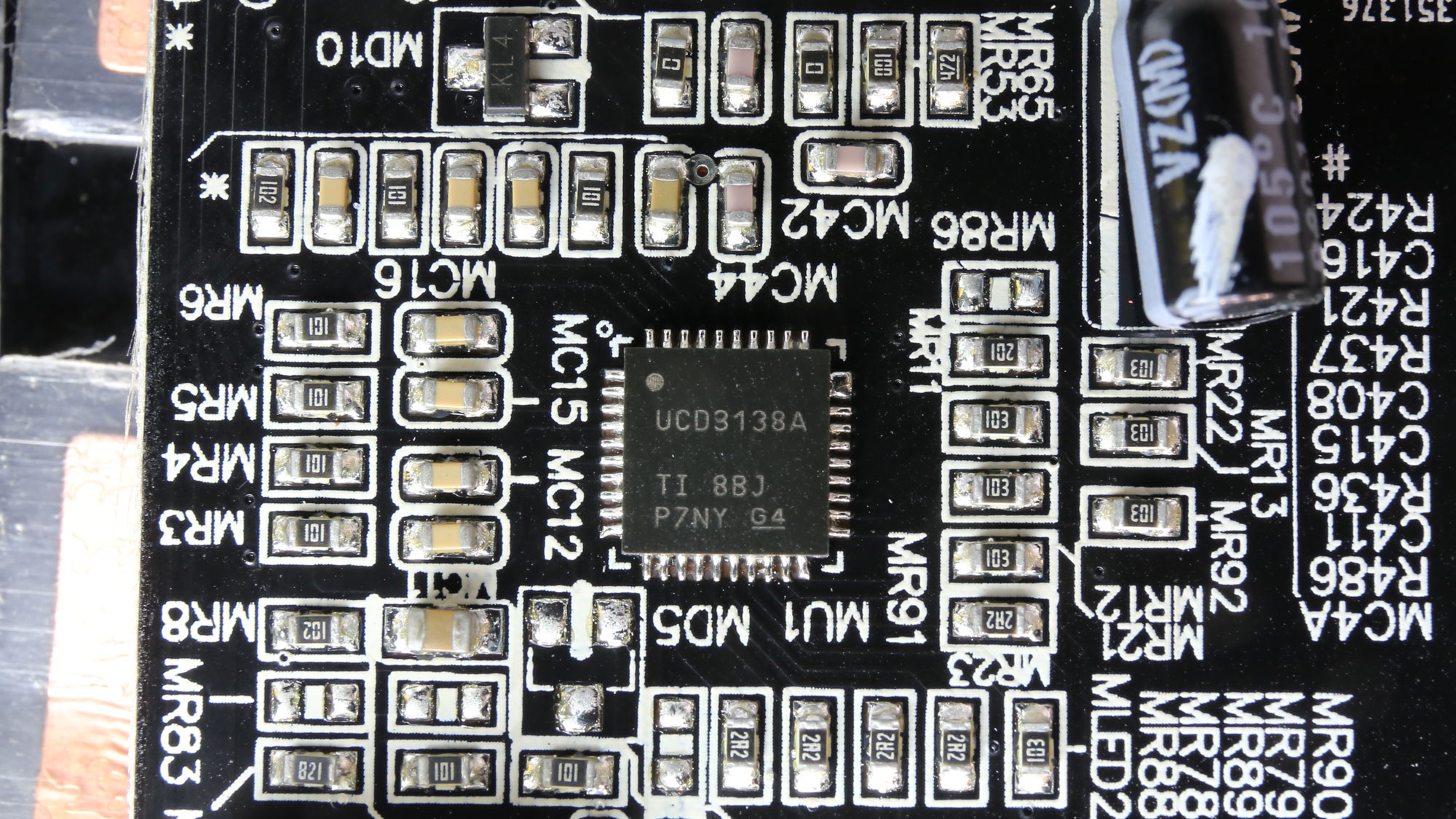
Texas Instruments provides the pair of digital controllers. Their model number is UCD3138A, and this is not the first time we see this type of MCU. One of them handles the APFC converter, and the other one the primary switching FETs and the 12V regulation circuit. One of these MCUs also takes care of the system's protection features, cooperating with the two analog supervisor ICs.
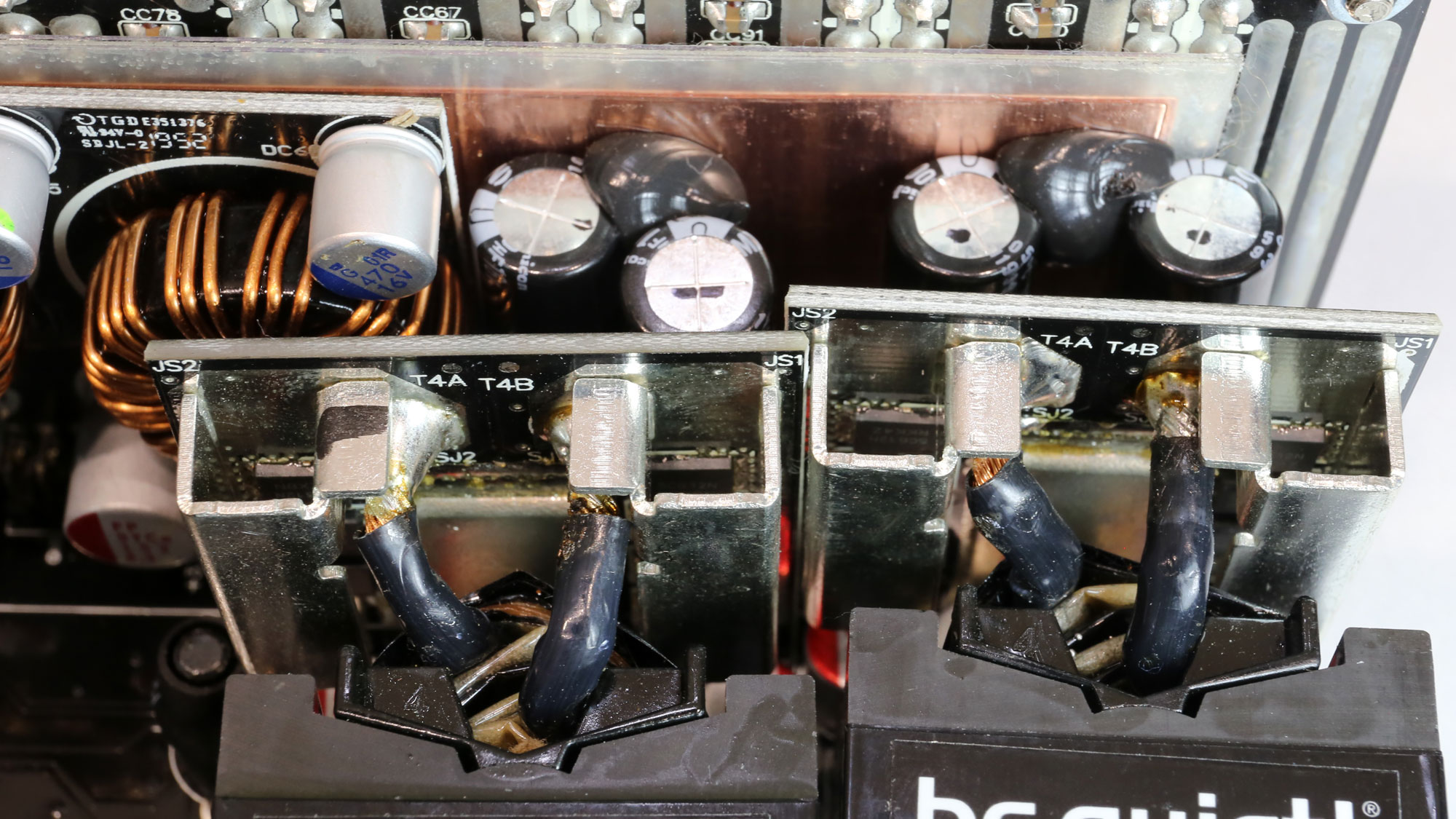
12V FETs and VRMs
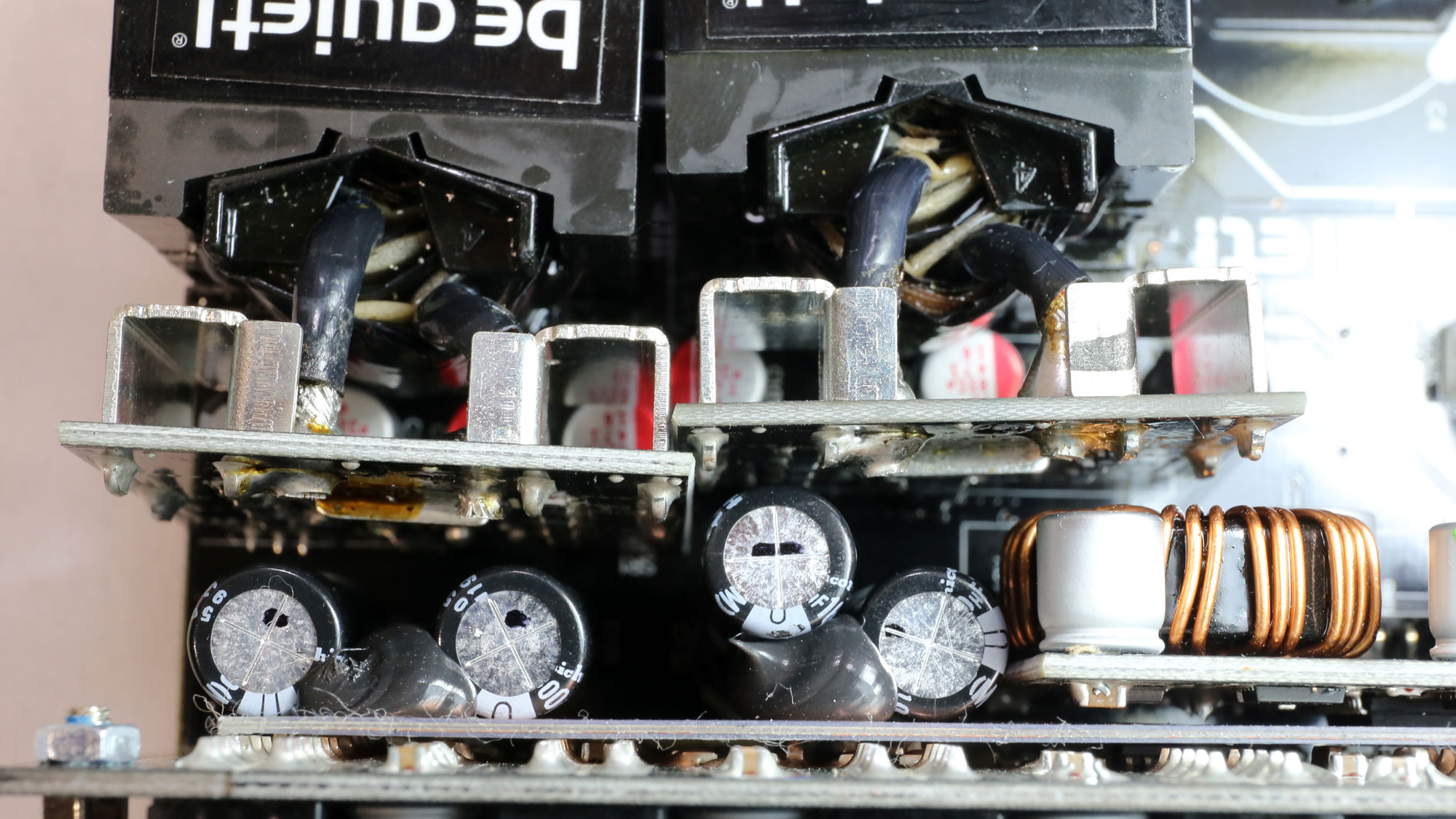

Twelve On Semiconductor NTMFS5C612N FETs regulate the 12V rail. They are installed on vertical boards, which are right beside the main transformers, to minimize voltage drops and energy losses.
The DC-DC converters that generate the minor rails are installed on the same daughter-board. In total, six FETs are used, and a single PWM controller. There is no digital control for these rails, unfortunately.

Filtering caps


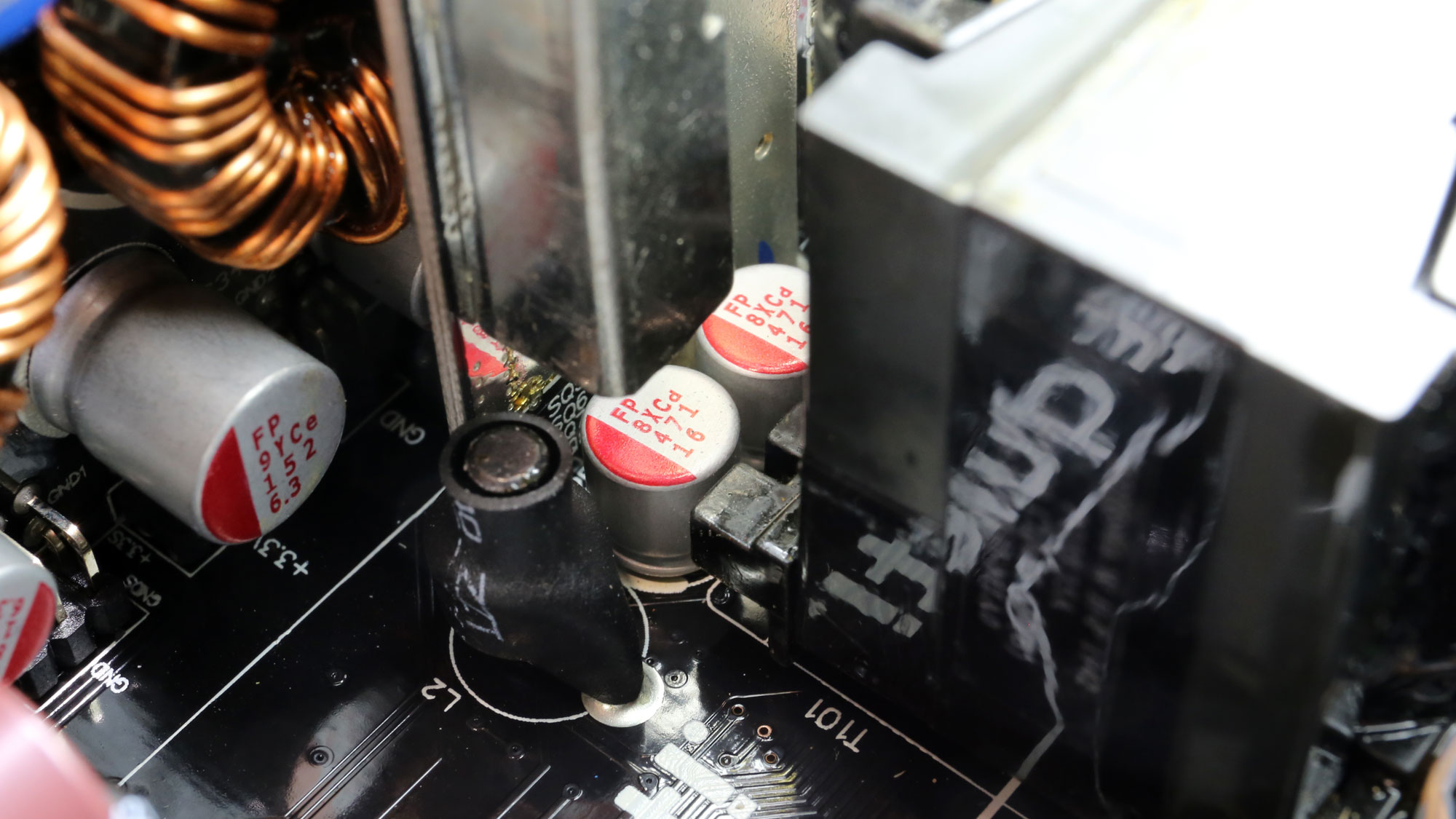
Not many electrolytic caps are used, but most of the caps that CWT used are of high quality. Ripple filtering relies mostly on polymer caps, and there is a massive number of those, 40 to be more specific.
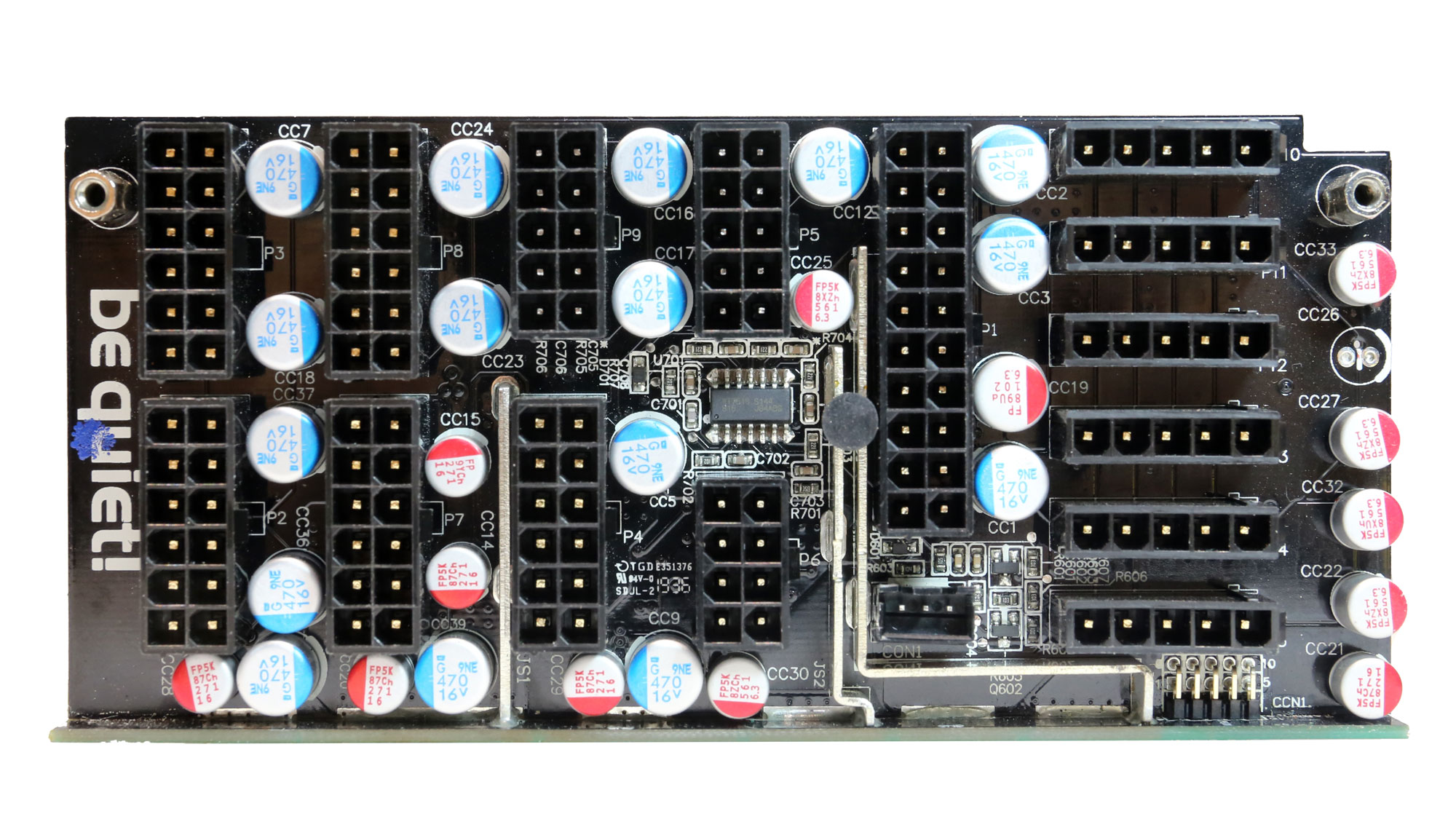
Modular board front


Many polymer caps are installed on the modular board, along bus-bars that handle power transfers.
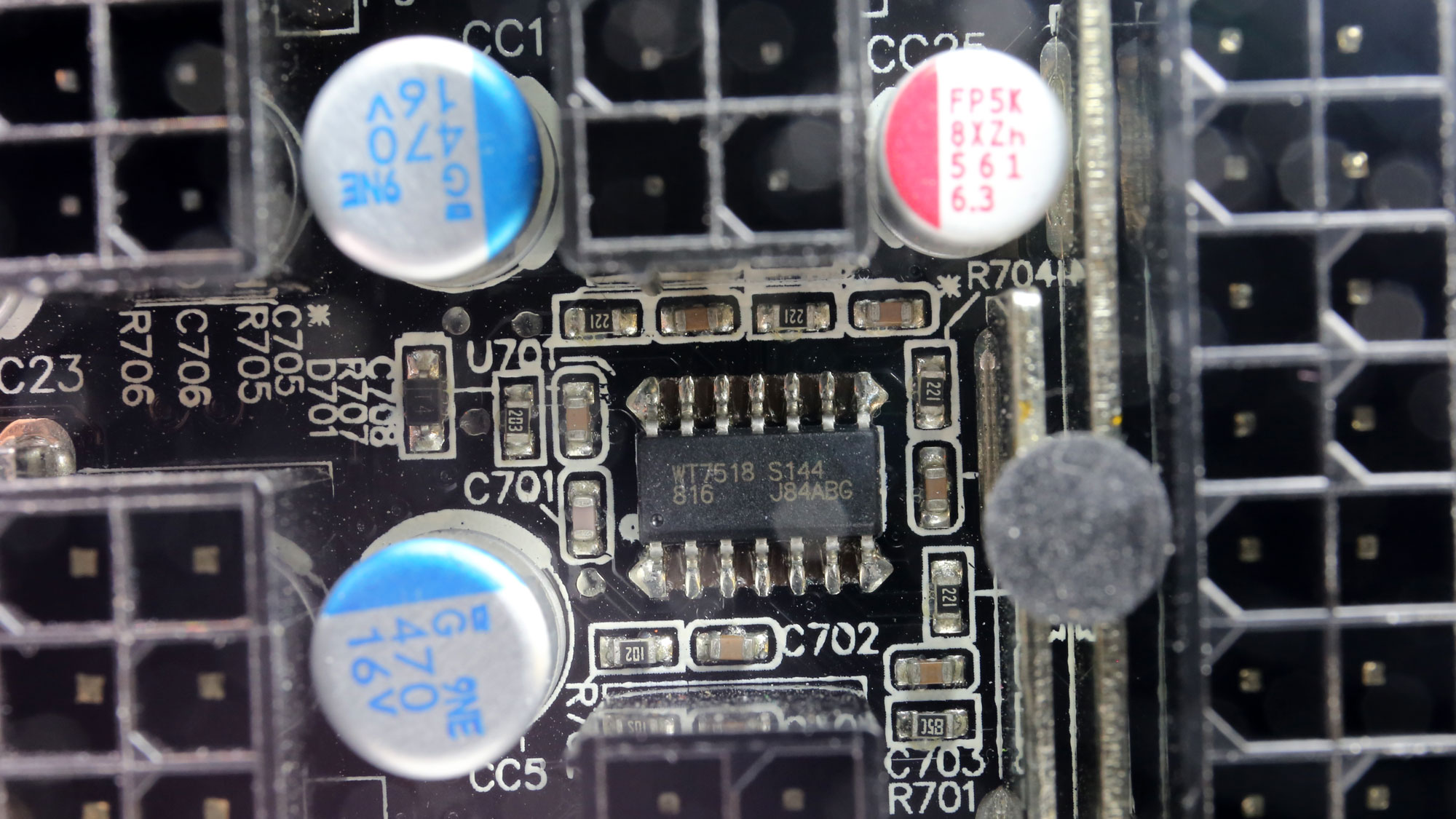
Supervisor ICs
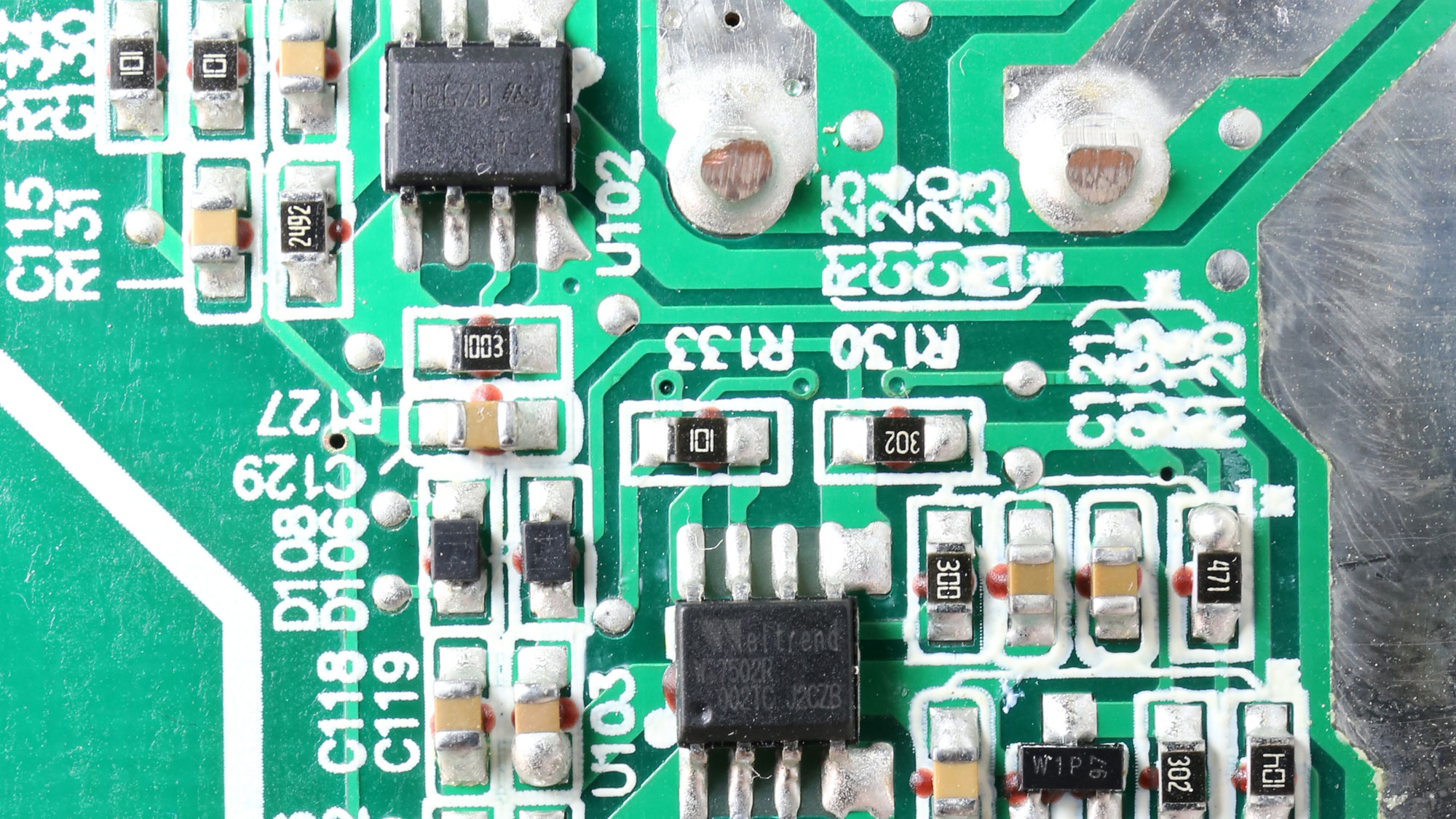
One of the supervisor ICs is installed on the center of the modular PCB, while the other one is on the solder side of the main PCB. Weltrend provides both supervisor ICs.

5VSB circuit
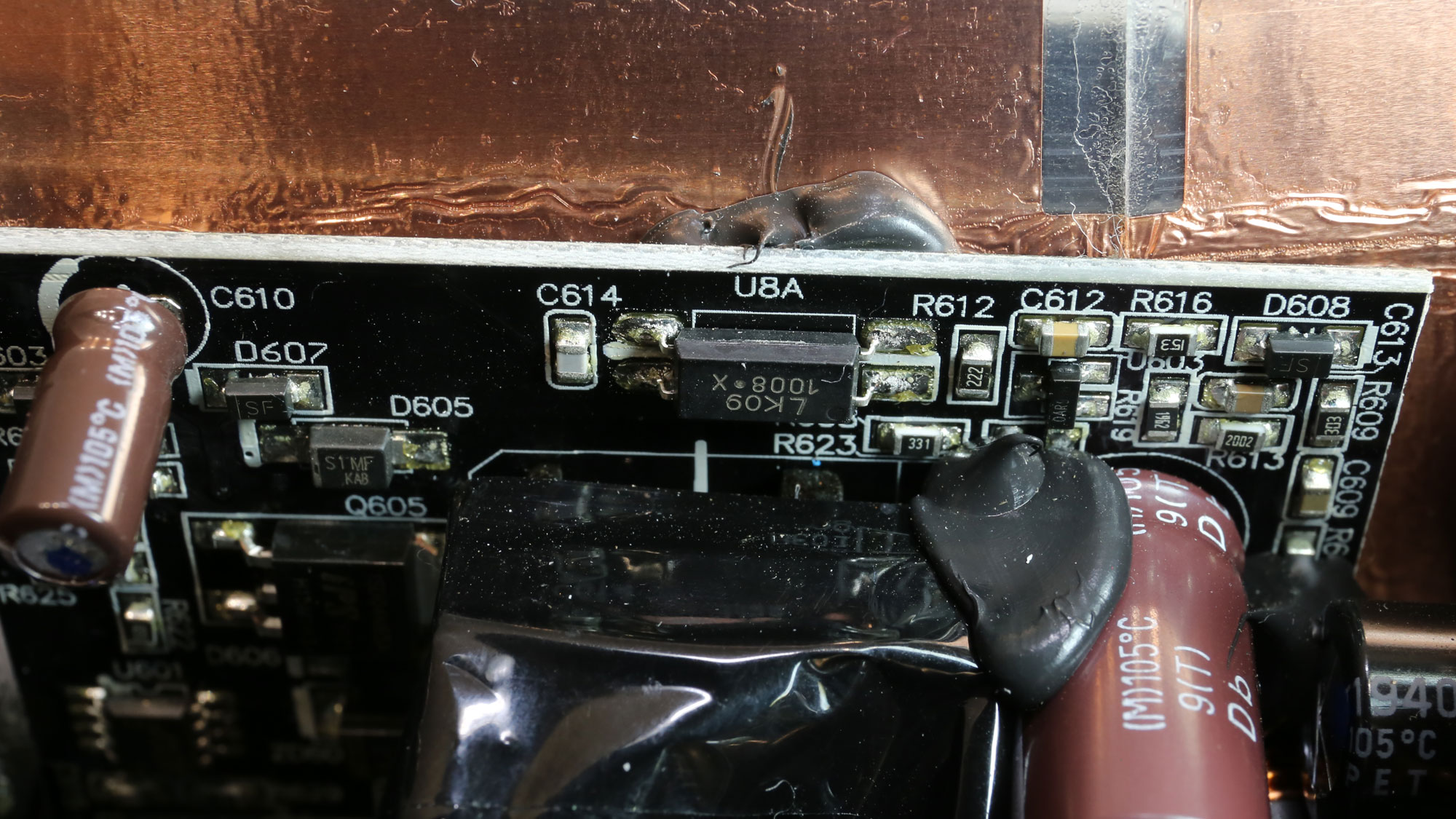
The 5VSB rail is regulated by the circuit shown in the photos above. It uses analog controllers, as the minor rails. CWT has higher efficiency 5VSB circuits in its portfolio, so we wonder why it didn't use one of these in such a high-end PSU.

Soldering quality

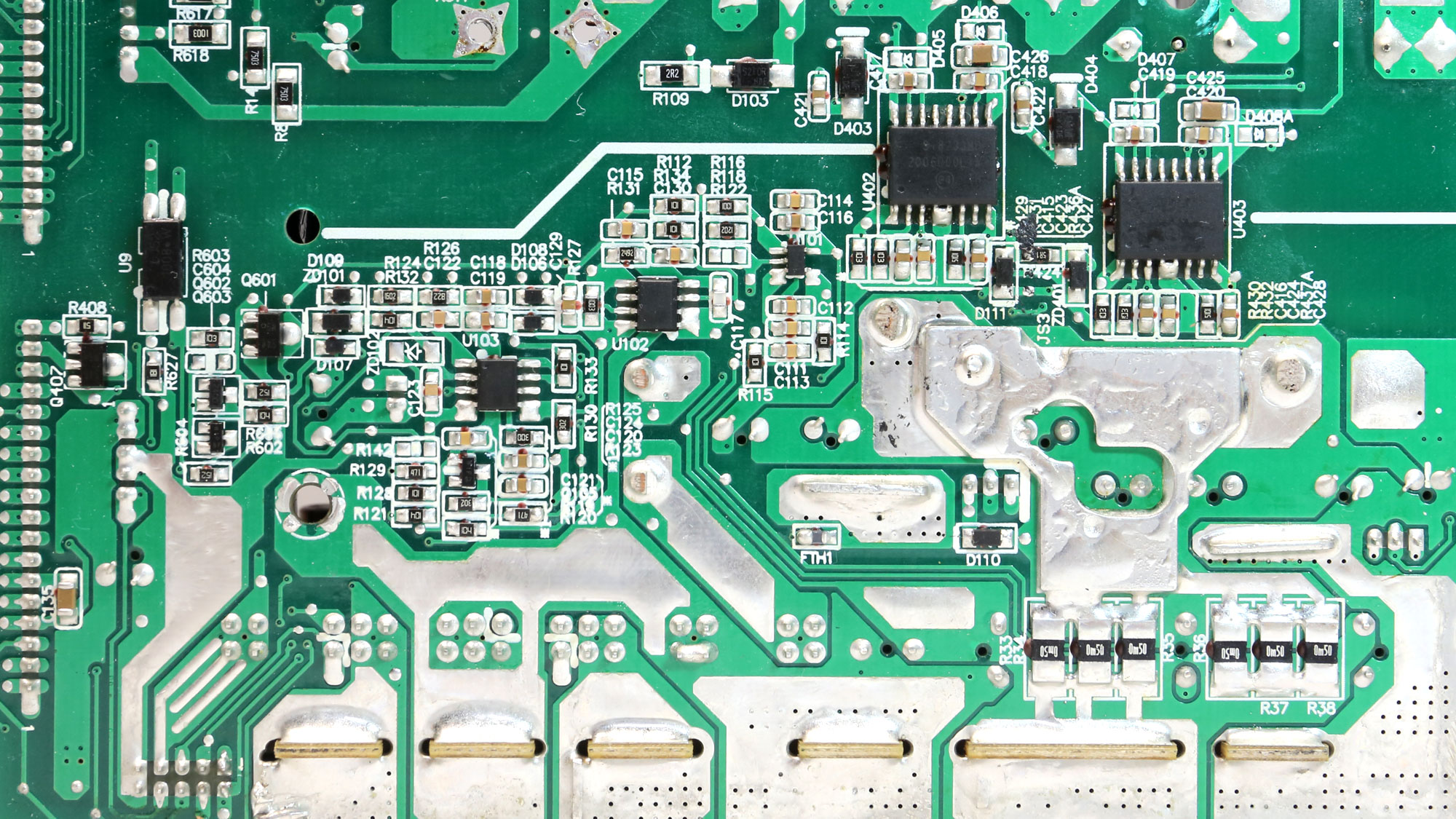

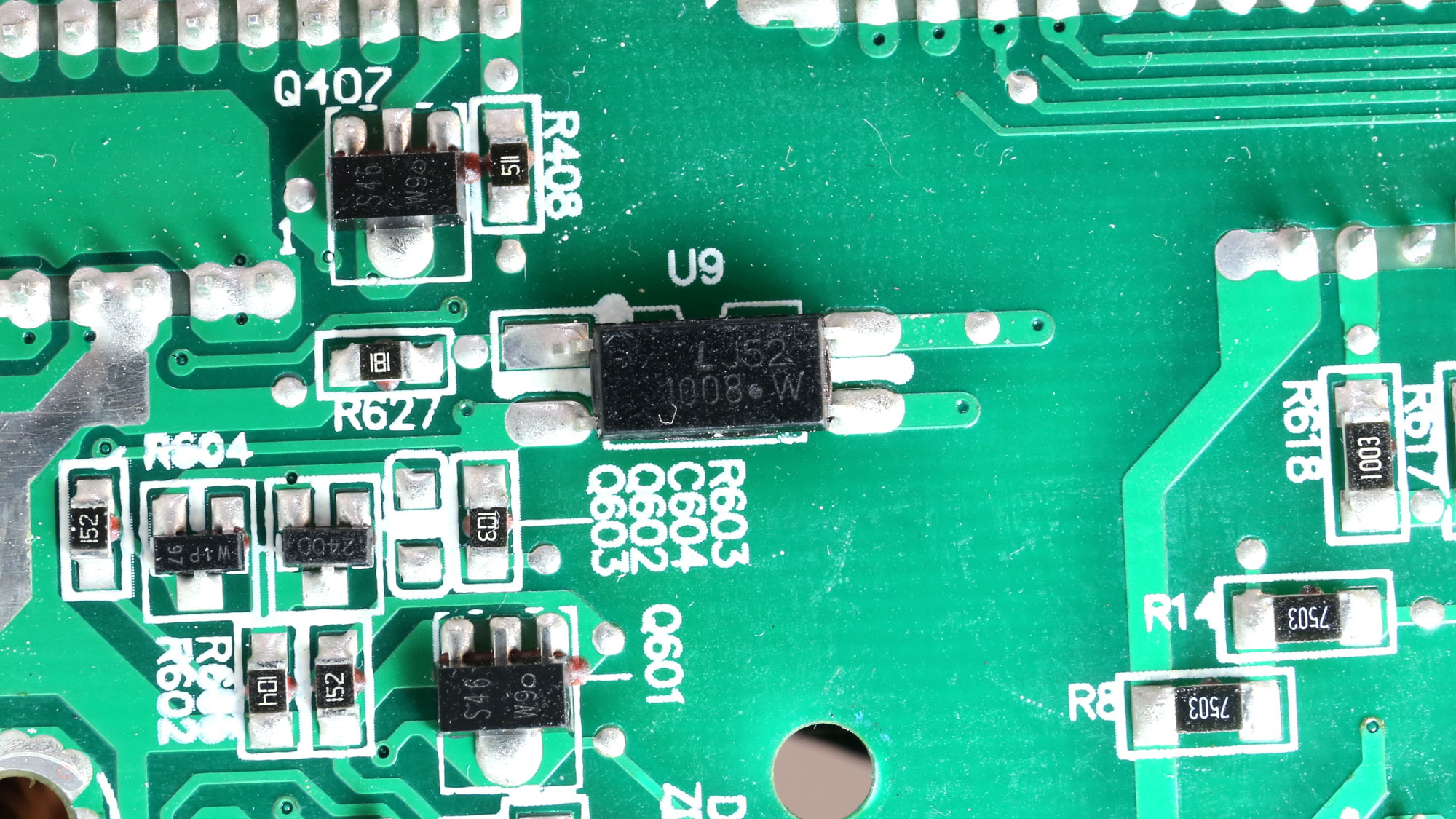
Soldering quality is good, as expected in such an expensive product.
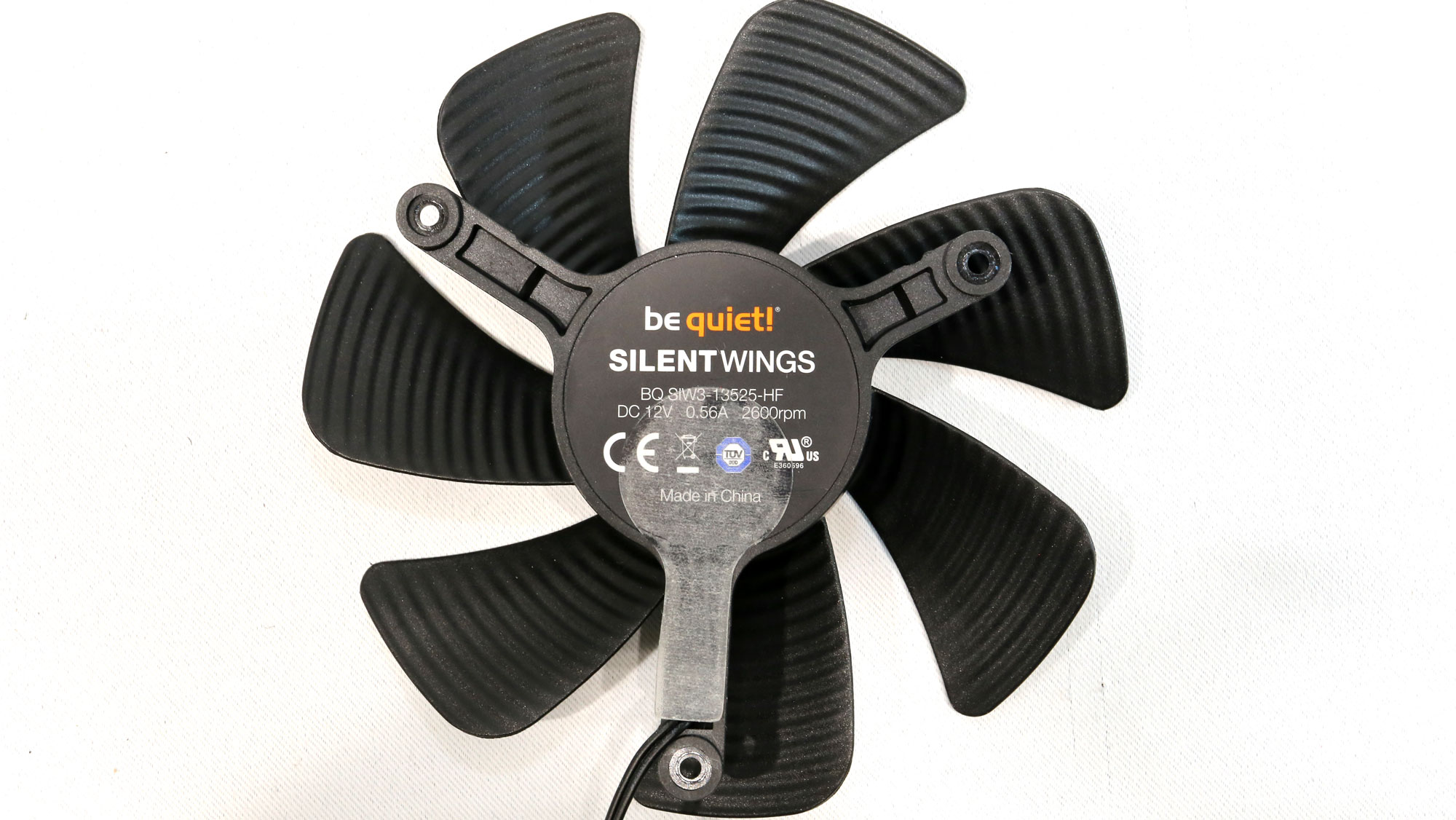
Cooling fan

The cooling fan uses a frameless design, which helps in producing more airflow. According to be quiet! this design also allows for lower noise output.
MORE: Best Power Supplies
MORE: How We Test Power Supplies
MORE: All Power Supply Content
Current page: Specifications and Part Analysis
Next Page Load Regulation, Hold-Up Time, Inrush & Leakage Current, Efficiency and Noise
Aris Mpitziopoulos is a contributing editor at Tom's Hardware, covering PSUs.
-
patrick47018 Reply
Try the EVGA G+ instead, or you could buy the Dark Power Pro 12 on Amazon right now with the 1200W in stock and the 1500W coming and able to be ordered.tamalero said:Been trying to find a Corsair AX and EVGA T2 and nobody has them on stock! -
mac_angel I've never seen a power supply with an "overclock" jumper/setting. You mention that this has it, and that it combines the 'virtual' single 12v rails into a single big one, but not what that means.Reply